reality distortion field
description: a term coined by Bud Tribble at Apple Computer in 1981 to describe company co-founder Steve Jobs' ability to persuade himself and others to believe almost anything
75 results
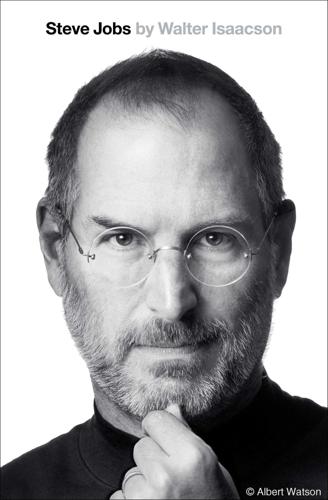
Steve Jobs
by
Walter Isaacson
Published 23 Oct 2011
He meant the phrase to be a compliment as well as a caution: “It was dangerous to get caught in Steve’s distortion field, but it was what led him to actually be able to change reality.” At first Hertzfeld thought that Tribble was exaggerating, but after two weeks of working with Jobs, he became a keen observer of the phenomenon. “The reality distortion field was a confounding mélange of a charismatic rhetorical style, indomitable will, and eagerness to bend any fact to fit the purpose at hand,” he said. There was little that could shield you from the force, Hertzfeld discovered. “Amazingly, the reality distortion field seemed to be effective even if you were acutely aware of it. We would often discuss potential techniques for grounding it, but after a while most of us gave up, accepting it as a force of nature.”
…
We would often discuss potential techniques for grounding it, but after a while most of us gave up, accepting it as a force of nature.” After Jobs decreed that the sodas in the office refrigerator be replaced by Odwalla organic orange and carrot juices, someone on the team had T-shirts made. “Reality Distortion Field,” they said on the front, and on the back, “It’s in the juice!” To some people, calling it a reality distortion field was just a clever way to say that Jobs tended to lie. But it was in fact a more complex form of dissembling. He would assert something—be it a fact about world history or a recounting of who suggested an idea at a meeting—without even considering the truth.
…
“His reality distortion is when he has an illogical vision of the future, such as telling me that I could design the Breakout game in just a few days. You realize that it can’t be true, but he somehow makes it true.” When members of the Mac team got ensnared in his reality distortion field, they were almost hypnotized. “He reminded me of Rasputin,” said Debi Coleman. “He laser-beamed in on you and didn’t blink. It didn’t matter if he was serving purple Kool-Aid. You drank it.” But like Wozniak, she believed that the reality distortion field was empowering: It enabled Jobs to inspire his team to change the course of computer history with a fraction of the resources of Xerox or IBM. “It was a self-fulfilling distortion,” she claimed.
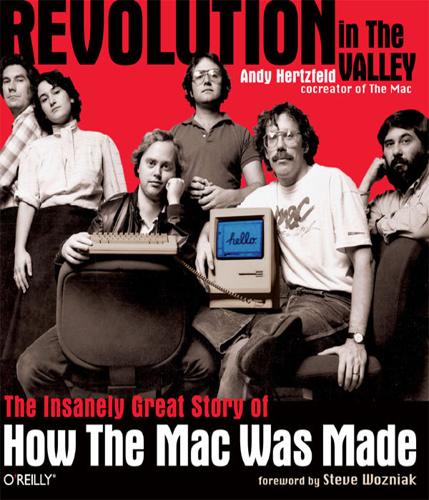
Revolution in the Valley: The Insanely Great Story of How the Mac Was Made
by
Andy Hertzfeld
Published 19 Nov 2011
“I know,” he responded in a low voice, almost a whisper. “You know? If you know the schedule is off-base, why don’t you correct it?” “Well, it’s Steve. Steve insists that we’re shipping in early 1982 and won’t accept answers to the contrary. The best way to describe the situation is a term from Star Trek. Steve has a reality distortion field.” “A what?” “A reality distortion field. In his presence, reality is malleable. He can convince anyone of practically anything. It wears off when he’s not around, but it makes it hard to have realistic schedules. And there are a couple of other things you should know about working with Steve.” “What else?”
…
I thought Bud was surely exaggerating, until I observed Steve in action over the next few weeks. The reality distortion field was a confounding mélange of a charismatic rhetorical style, an indomitable will, and an eagerness to bend any fact to fit the purpose at hand. If one line of argument failed to persuade, he would deftly switch to another. Sometimes, he would throw you off balance by suddenly adapting your position as his own, without acknowledging that he ever thought differently. Amazingly, the reality distortion field seemed to be effective even if you were acutely aware of it, although the effects would fade after Steve departed.
…
“THE JOURNEY IS THE REWARD” A few hours later, after dinner, Bill told me he had arranged to meet with Steve in private early the next morning, before the day’s meetings commenced. He then surprised me by asking me to accompany him. I told him it wasn’t my business and that I felt it was inappropriate for me to attend, but Bill insisted, telling me he needed my support, if only to have someone else present to help ground Steve’s infamous reality distortion field (see “Reality Distortion Field” on page 24). Even though I knew it would be awkward, I told him I’d do it. We were both nervous as Bill knocked on the door of the small office Steve was using during the retreat. Steve opened the door, looking angry when he noticed I was present. “What is he doing here?”
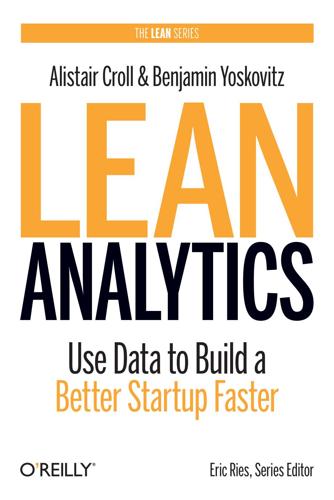
Lean Analytics: Use Data to Build a Better Startup Faster
by
Alistair Croll
and
Benjamin Yoskovitz
Published 1 Mar 2013
Long before the actual derailment, you knew this was going to happen. It wasn’t working. But at the time, your reality distortion field was strong enough to keep you going on faith and fumes alone. As a result, you hit the wall at a million miles an hour, lying to yourself the whole time. We’re not arguing against the importance of the reality distortion field—but we do want to poke a few holes in it. Hopefully, as a result, you’ll see the derailment in time to avoid it. We want you to rely less on your reality distortion field, and rely more on Lean Analytics. Airbnb Photography—Growth Within Growth Airbnb is an incredible success story.
…
—Zach Nies—Chief Technologist, Rally Software “Lean Analytics is the missing piece of Lean Startup, with practical and detailed research, advice and guidance that can help you succeed faster in a startup or large organization.” —Dan Martell—CEO and Founder, Clarity “Entrepreneurs need their own reality distortion field to tilt at improbable windmills. But that delusion can be their undoing if they start lying to themselves. This book is the antidote. Alistair and Ben have written a much-needed dose of reality, and entrepreneurs who ignore this data-driven approach do so at their peril.” —Brad Feld—Managing Director, Foundry Group; Co-founder, TechStars; and Creator, the Startup Revolution series of books “Lean Analytics will take you from Minimum Viable Product to Maximally Valuable Product.
…
Lying may even be a prerequisite for succeeding as an entrepreneur—after all, you need to convince others that something is true in the absence of good, hard evidence. You need believers to take a leap of faith with you. As an entrepreneur, you need to live in a semi-delusional state just to survive the inevitable rollercoaster ride of running your startup. Small lies are essential. They create your reality distortion field. They are a necessary part of being an entrepreneur. But if you start believing your own hype, you won’t survive. You’ll go too far into the bubble you’ve created, and you won’t come out until you hit the wall—hard—and that bubble bursts. You need to lie to yourself, but not to the point where you’re jeopardizing your business.
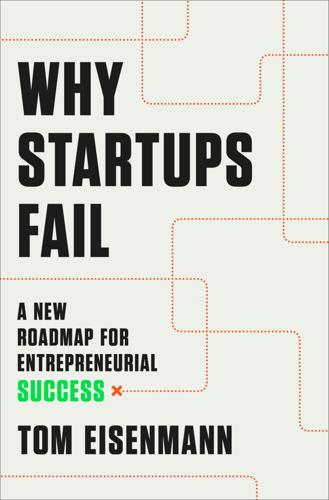
Why Startups Fail: A New Roadmap for Entrepreneurial Success
by
Tom Eisenmann
Published 29 Mar 2021
For employees, it might mean a willingness to work long hours or accept a below-market salary in exchange for the upside of stock options. • The Hazard: A reality distortion field can reverse itself. Rather than bending reality to their will, overconfident founders may fail to perceive signals that their vision is a pipe dream. We’ll see some examples of this in Part II, which examines failure patterns among late-stage startups—including Better Place, which lost $900 million trying to build a network of recharging stations for electric cars. An entrepreneur’s reality distortion field can have a colossal negative impact on a late-stage startup that has hundreds of employees and hundreds of millions of dollars in invested capital.
…
Monomania and charisma don’t necessarily go hand in hand, but a leader with both can move mountains. The term “reality distortion field” was coined for a 1960s Star Trek episode, but later was co-opted to describe Steve Jobs’s uncanny ability to mesmerize the engineers developing the original Macintosh computer, inspiring them to work eighty-hour weeks for months on end. Jobs exhorted: “We’re here to put a dent in the universe. Otherwise, why else even be here?” Under the spell of a reality distortion field, potential employees, investors, and strategic partners perceive a reality in which their commitment to the venture can—despite enormous obstacles—help make the founder’s dream come true.
…
• The Hazards: Entrepreneurs who struggle to raise initial funding—especially first-time founders who lack a track record—may take money from investors who don’t add much value, whose preferences regarding risk/reward trade-offs are not aligned with those of the founders, and who lack the means to provide additional capital should the venture stumble. We’ll see in the next chapter that Quincy’s founders experienced all three of these problems with their lead investors. Tactic 4: Storytelling (Downplaying Risk). By propagating a “reality distortion field”—that is, mesmerizing potential employees, investors, and strategic partners so they focus on a startup’s world-changing potential rather than on its real-world risks—overconfident and charismatic founders in particular are able to persuade people to commit resources under terms favorable to their new venture.

Boom: Bubbles and the End of Stagnation
by
Byrne Hobart
and
Tobias Huber
Published 29 Oct 2024
CCRU, Writings 1997–2003, 14. 360 Nick Land, “Hyperstition: An Introduction,” interview by Delphi Carstens, Orphan Drift, 2009, https://www.orphandriftarchive.com/articles/hyperstition-an-introduction/. 361 The phrase, which originated in a 1966 Star Trek episode in which a humanoid species uses reality-distortion fields to create hyper-realistic illusions, was also used by an early Apple software engineer to describe Steve Jobs’s reality-bending charisma and management style. Hertzfeld, “Reality Distortion Field,” Folklore.org, February 1981, https://www.folklore.org/StoryView.py?project=Macintosh&story=Reality_Distortion_Field.txt. 362 David Noble, The Religion of Technology: The Divinity of Man and the Spirit of Invention (New York: Knopf, 1997); Erik Davis, TechGnosis: Myth, Magic, and Mysticism in the Age of Information (Berkeley, CA: North Atlantic Books, 2015). 363 Max Weber, The Protestant Ethic and the “Spirit” of Capitalism and Other Writings (London: Routledge, 2005), 123. 364 Reflected, for example, in debates around the ethics of producing money both within and outside of religious circles—and by the fact that US currency still says “In God We Trust.” 365 Elon Musk (@elonmusk), “This is why we must preserve the light of consciousness by becoming a spacefaring civilization & extending life to other planets,” Twitter, June 25, 2018, https://twitter.com/elonmusk/status/1011083630301536256. 366 Elon Musk (@elonmusk), “It is unknown whether we are the only civilization currently alive in the observable universe, but any chance that we are is added impetus for extending life beyond Earth,” Twitter, June 25, 2018, https://twitter.com/elonmusk/status/1011085383239589888. 367 Noble, The Religion of Technology, 127. 368 Noble, The Religion of Technology, 136–142. 369 Noble, The Religion of Technology, 140. 370 Noble, The Religion of Technology, 134. 371 Genesis, 1:26 372 Historically, the invention of electricity had a spiritual and religious impact similar to the advent of artificial intelligence today.
…
“Remaking Social Practices,” in The Guattari Reader, edited by Gary Genosko. Cambridge, MA: Blackwell, 1996. Gumbrecht, Hans Ulrich. Our Broad Present: Time and Contemporary Culture. New York City: Columbia University Press, 2014. Hertzfeld, Andy. “Reality Distortion Field.” Folklore.org, February 1981. https://www.folklore.org/Reality_Distortion_Field.html. Hölderlin, Friedrich. “Patmos.” In The Oxford Companion to German Literature, edited by Henry Garland and Mary Garland. Oxford: Oxford University Press, 1997. Holland, Tom. Dominion: The Making of the Western Mind. London: Hachette UK, 2019.
…
It’s no wonder Gene Kranz, an Apollo 13 flight director, called “irrational exuberance” a prerequisite to space exploration. 189 Speaking in 2004, he used the same phrase then-Federal Reserve chair Alan Greenspan had deployed when describing the dot-com bubble. The greatest risk of manned space missions is, as one former NASA astronaut put it, “not death” but “not to explore at all.” 190 Worse still is the idea that one might miss out on being the first to reach the next frontier—FOMO on a cosmic level. 191 In sum, Apollo was a reality-distortion field that heavily skewed perception of the program’s risks and rewards. As a consequence of this bubble-like dynamic, society’s risk tolerance increased substantially, enabling unprecedented financial and technical risk-taking. The extreme willingness to take risks, constantly reinforced by unrealistic levels of optimism, may not sound rational, but it put a man on the Moon.
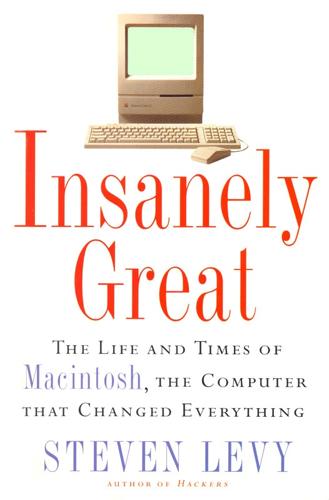
Insanely Great: The Life and Times of Macintosh, the Computer That Changed Everything
by
Steven Levy
Published 2 Feb 1994
In lieu of a traditional greeting, his first words to me were, "I think you're making a big mistake by not putting the Mac on the cover." His eyes bore down on me out of a some-what hawklike face, and I immediately became flustered. This was my first exposure to what Jobs's subordinates would call "the reality distortion field." Though I was in no danger of accepting his premise, the effect of his tirade was impressive. The people standing around us looked embarrassed. Then, just as suddenly, Jobs took off, headed to douse some unidentified conflagration. It was understood that we'd have dinner that night. Sometime after the appointed hour, we got into his car and headed for a nearby pizza house.
…
Tom Sawyer could have picked up tricks from Steve Jobs. Time after time, he insisted that the Macintosh was going to shock the world, be not merely great but insanely great, and it was clear that he believed it. Sometimes the wizards of Mac would roll their eyes at his rantsremember, they referred to Steve as a walking Reality Distortion Field-but they were flattered, too, and determined to transform the hyperbole into truth. One day, for instance, they were trying to "bring up" the main logic board-soldering the chips to the custommade circuitry-and Jobs challenged them: If you finish it by midnight, we'll all go out for pineapple pizza at Frankie, Johnnie, and Luigi's!
…
He and other likeminded engineers continued the relationship with Sony even when Jobs ordered them to terminate it. The high point in this deception occurred when Jobs dropped into Bandley 3 at the same time a Sony executive had come for a meeting. The Macintosh engineers literally ushered the disoriented Japanese businessman into a closet until the Reality Distortion Field had passed. Once again, the unmasking of the plot was a welcome escape to a hole Jobs had dug for himself. The Sony drive was a substantial addition to the Macintosh mystique of leading-edge yet compassionately designed technology. Not only did it use smaller disks than the previous standard, but the fragile Mylar that held the data was protected by a rigid plastic coating.

The Perfect Thing: How the iPod Shuffles Commerce, Culture, and Coolness
by
Steven Levy
Published 23 Oct 2006
Jobs himself looks back to the Macintosh effort as a peak. Other people involved in the effort look back to that period with a Camelot-type nostalgia. But at the time, it was a jagged fever chart of highs and lows—and it vividly illustrated why Jobs is not your normal leader. Those were the days when his employees created the term "Reality Distortion Field," which stuck with Jobs as a description of how his own beliefs—often at odds with conventional wisdom and, at times, at odds with the facts—were irresistibly contagious to those within earshot. On one hand, the term reflected the frustration of the Mac workers; Jobs would get things into his head, and that would be it.
…
Only a repeated assault by actual reality (when things just didn't work) would change his mind. The Perfect Thing 200 But the term was not strictly pejorative. For one thing, Jobs was often right, and only his unwillingness to compromise would convince others that taking an untrodden path was correct. More to the point, people who were in range of the reality distortion field often came to believe they could actually accomplish what seemed impossible. And they wound up exceeding their own wildest expectations, simply because they knew that nothing less was expected. Even when Jobs's criticism went overboard, his tantrums would often have a beneficial effect. Think about it: How often does anyone do a job so well that it cannot be improved upon?
…
Indeed, the people who worked on Macintosh now look back and can't believe what they did. I have kept up with many who worked on the original Macintosh—some have become close friends—and to the last person, they describe that time as the most bruising period in their professional lives—and by a long shot, the most satisfying. Reality distortion field or not, they believed they were working on one of the most important products in the history of technology. This could be described as a mass delusion except Apple for the fact that the Macintosh was one of the most important projects in the history of technology. In Steve Jobs's case, the emperor had clothes.
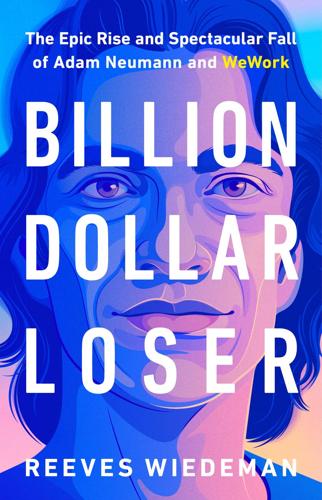
Billion Dollar Loser: The Epic Rise and Spectacular Fall of Adam Neumann and WeWork
by
Reeves Wiedeman
Published 19 Oct 2020
ISBN 978-0-316-46134-4 (ebook) LCCN 2020940737 E3-20200828-DA-NF-ORI Table of Contents Cover Title Page Copyright Dedication Epigraph Prologue Chapter One: Capitalist Kibbutz Chapter Two: Green Desk Chapter Three: 154 Grand Street Chapter Four: “I Am WeWork” Chapter Five: Sex, Coworking, and Rock ’n’ Roll Chapter Six: The Physical Social Network Chapter Seven: Reality Distortion Field Chapter Eight: Greater Fools Chapter Nine: WeLive Chapter Ten: Manage the Nickel Chapter Eleven: Mr. Ten Times Chapter Twelve: Me Over We Chapter Thirteen: Blitzscaling Chapter Fourteen: The Holy Grail Chapter Fifteen: WeGrow Chapter Sixteen: Game of Thrones Chapter Seventeen: Operationalize Love Chapter Eighteen: A WeWork Wedding Chapter Nineteen: Fortitude Chapter Twenty: The I in We Chapter Twenty-One: Wingspan Chapter Twenty-Two: Always Half Full Chapter Twenty-Three: The Sun Never Sets on We Chapter Twenty-Four: Brave New World Discover More Author’s Note Acknowledgments About the Author For Mom and Dad Explore book giveaways, sneak peeks, deals, and more.
…
The engineers were working twelve-hour days, sometimes more, plus the weekend construction duty expected of every employee; one night, Joey Cables found himself installing a toilet in a new WeWork location. It wasn’t totally clear to the tech team that their work could produce what Neumann wanted. “Adam used to say, ‘We’re on a rocket ship,’” the WeWork engineer said. “The joke was, ‘A rocket ship to where?’” Chapter Seven Reality Distortion Field A FEW WEEKS into 2014, Benjamin Dyett organized a meeting of what he called the Five Families of Coworking. Dyett was the owner of Grind, an upmarket coworking space that he opened in 2011. Landlords had begun to shift their attitude toward the new operators, thanks in part to the growing attention lavished upon WeWork, but the industry remained at a precarious moment: small fish swimming alongside much bigger sharks.
…
Many of them looked up to Miguel, who still spent considerable time in the trenches, designing and building out new spaces. But the company was beginning to form itself in Adam’s image. For all his bluster, he could be an inspiring leader, pushing WeWork employees beyond their limits for the good of the cause and the promise of riches down the line. They compared his aura to the “reality distortion field” that an Apple employee once described as emanating from Steve Jobs, convincing anyone within its radius that the impossible was not only plausible, but exactly what they were going to do. After several workers installed a large stone table in a Manhattan WeWork, one employee noticed smears of blood left behind by one of the workers, which felt poetic.
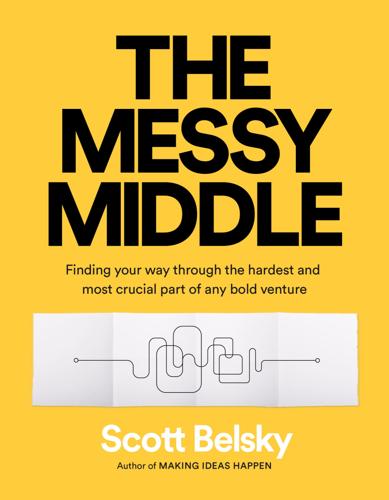
The Messy Middle: Finding Your Way Through the Hardest and Most Crucial Part of Any Bold Venture
by
Scott Belsky
Published 1 Oct 2018
After all, the middle of a journey is a blurry, mundane landscape. To get through the tremendous voids of nothingness in between the milestones, provide guidance. You’re the narrator of this journey. People who worked with Apple founder Steve Jobs over the years often talked about how his “reality-distortion field” could alter his team’s perspective, assumptions, and limits to allow for new ideas. Perhaps Jobs believed in his vision so much so that the reality around him was distorted by the power of his conviction? When you’re articulating a vision and set of assumptions with such passion and confidence, reality starts to bend your way.
…
You’re not lying or manufacturing perspective—you’re merchandising your perspective. You’re not creating a story that you think others will believe—you’re retelling the same story you tell yourself. The same forces can help a team endure another form of reality: work with no end in sight. In this case, your reality-distortion field shows people hope when they can’t see it for themselves. For example, you may see these tough days you’re currently enduring as character building for your team and as a source of defensibility for your product—even though it currently feels anything but. Are you lamenting a lack of progress or celebrating your survival and newfound strength?
…
M., 201 Pentagram, 274–75 performance, and productivity, 214 Periscope, 10, 69–70, 112, 204, 233, 252, 264–65 Twitter’s acquisition of, 69, 264–65 permission, asking for forgiveness vs., 199–202 perseverance, persistence, 62, 79, 85 perspective, 40–42, 66, 74, 326 quitting and, 62–64 Photoshop, 10, 144, 159, 162, 185, 206–7, 238–39, 270, 347 Pine Street, 125 Pinterest, 10, 64, 86–87, 94, 112, 158–59, 165, 174, 204, 233, 248, 319 Pixar, 141 placebo, 59–61 planning, 93, 280–81 polarizing people, 114–15 PolitiFact, 303 positive feedback, and hard truths, 28–31 Post-it notes, 325 pragmatists, 295, 296 Prefer, 28, 298, 299 preparedness, 16 presenting ideas, vs. promoting, 164–65 press, 265–66, 336 Pretty Young Professionals (PYP), 72–73 Principles (Dalio), 306, 307 problem solving, 209 big vs. small problems, 180–82, 322 explicitness and, 173–74 process, 153–57 Proctor & Gamble, 143 product(s), 8, 29 brand fit and, 256, 257 complexity in, 209–10, 217 explicitness in, 174–75, 271 founder fit and, 256 life cycle of, 209–10, 217 market fit and, 256 minimum viable (MVP), 86, 186, 195, 252 paradox of success of, 216 power users of, 217 products used to create, 143–45 simplicity in, 209, 210–11, 216–18, 271 product, optimizing, 17, 209–75 anchoring to your customers, 247–75 being first, 264–66 disproportionate impact and, 267–68 empathy and humility before passion, 248–50 engaging the right customers at the right time, 251–54 and measuring each feature by its own measure, 269–70 mystery and engagement in, 271–73 narrative in, 255–57 and playing to the middle, 274–75 and role of leaders in communities, 258–61 sales and, 262–63 simplifying and iterating, 213–46 and believing in the product, 223–25 creativity and familiarity in, 226–27 and design as invisible, 230–31 doing, showing, and explaining, 238–39 “first mile” and, 232–34 identifying what you’re willing to be bad at, 214–15 inbred innovations and, 245–46 incrementalism and assumptions in, 242–44 killing your darlings, 219–22 for laziness, vanity, and selfishness, 235–37 making one subtraction for every addition, 216–18 novelty and utility in, 240–41 scrutiny and flaws in, 228–29 productivity, 179, 180–82, 187, 322, 324, 325 measures of, 78–79 performance and, 214 promoting ideas, vs. presenting, 164–65 promotions, 130 progress, 24–25, 31, 40, 47, 64, 75, 83, 85, 160, 179, 181, 349 conflict avoidance and, 185–86 process and, 154 progress bars, 181 prototypes and mock-ups, 161–63 Psychological Bulletin, 272 psychological safety, 122 Psychological Science, 272–73 psychology, 316, 317 Quartz, 37–38, 108, 301 questions, 69–71, 183–84, 321 Quiller-Couch, Arthur, 220 Quinn, Megan, 303–4 quitting, perspective and, 62–64 Quora, 138, 167 Rad, Sean, 259 Radcliffe, Jack, 197 Rams, Dieter, 230 reactionary workflow, 327, 328 Ready, The, 179 reality-distortion field, 41 Reboot, 327 Reddit, 261, 300, 302 rejection, 58 relatability, 57 relationships: commitments and, 283–84 and how others perceive you, 316–17 negotiation and, 286–87 REMIX, 165 resets, 63–64, 72–75 resistance, fighting, 35–36 resourcefulness, and resources, 100–102 reward system, short-circuiting, 24–27 Rhode Island School of Design, 186, 354 rhythm of making, 16 Ries, Eric, 194 risk, 122, 316, 337 ritual, 328 rock gardens, 67–68 routines, 323 ruckus, making, 337–38 Saatchi Online, 89 Sabbath Manifesto, 327–28 safety, psychological, 122 Sakurada, Isuzu, 361–62 salaries, 141–42 sales, salespeople, 262–63 Salesforce, 159, 204 Sandberg, Sheryl, 39 Santa Fe, USS, 167 satisficers, 229, 284–85 scalability, 242 Schouwenburg, Kegan, 50–51 Schwartz, Barry, 284–85 science vs. art of business, 310–13 Seinfeld, Jerry, 250 self, optimizing, 8, 17, 277–338 crafting business instincts, 293–313 auditing measures instead of blindly optimizing, 297–99 data vs. intuition in, 300–304 mining contradictory advice and developing intuition, 294–96 naivety and openness in, 308–9 science vs. art of business, 310–13 stress-testing opinions with truthfulness, 305–7 planning and making decisions, 279–92 focus and choice, 282–85 making a plan vs. sticking to it, 280–81 negotiation in, 286–87 sunk costs and, 291–92 timing and, 288–90 sharpening your edge, 315–28 building a network and increasing signal, 320–21 commitments and, 318–19 disconnecting, 326–28 and how you appear to others, 316–17 leaving margins for the unexpected, 324–25 values and time use, 322–23 staying permeable and relatable, 329–38 attention and, 335–36 credit-seeking and, 330–32 and making a ruckus, 337–38 removing yourself to allow for others’ ideas, 333–34 self-awareness, 54–56, 305–7 selfishness, laziness, and vanity, 235–37 setbacks, 41 70/20/10 model for leadership development, 125 Shapeways, 50 Shiva, 374 shortcuts, 85 signal and noise, 320–21 Silberman, Ben, 86–87, 94, 112, 165, 319 Silicon Valley, 86 Simon, Herbert, 229, 284 SimpleGeo, 267 Sinclair, Jake, 334 skills, and choosing commitments, 283–84 Skybox, 101 sky decks, 117 Slack, 139, 210, 241 Slashdot, 295 Smarter Faster Better (Duhigg), 180 Smith, Brad, 373 Snapchat, 70, 189, 210, 227, 249 Snowden, Eric, 48, 162 Social Capital, 107 social media, 70, 139, 195, 210, 235–36, 243 solar eclipse, 300–302 SOLS, 50–51 Song Exploder, 333 Sonnad, Nikhil, 301–2 Sonos, 275 Southwest Airlines, 214–15 Soyer, Emre, 32–33 SpaceX, 168 Spark, 303 speed, 194–98 Spiegel, Evan, 249 Spot, 256, 257 Square, 303–4 Squarespace, 312 Stafford, Tom, 291 stand-ins, 297–98 start, 1, 6–8, 13, 209, 331 Statue of Liberty, 200 Stein, Dave, 280 Steinberg, Jon, 44–45, 313 Stitch Fix, 79 story, see narrative and storytelling Stratechery, 135 strategy, patience and, 80–85 strengths, 29, 54, 95, 214 stretch assignments, 130 structure, rules for, 150–52 StumbleUpon, 112, 256 Stumbling on Happiness (Gilbert), 196 suffering, 35–36, 131 Summers, Larry, 108 sunk costs, 64, 71, 185, 291–92 Super Bowl, 273 superiority, sense of, 331–32 suspension of disbelief, 60–61 Suster, Mark, 204–5 Swarthmore College, 229 sweetgreen, 10, 151, 217, 221, 233, 245–46, 310 Systemized Intelligence Lab, 306 Systems Thinking, 283 Systrom, Kevin, 36 Taflinger, Richard, 38 talent, 119–25, 127, 187 Talk of the Nation, 196 TaskRabbit, 259 team, 39, 331, 332 energy and, 43–45 perspective and, 40–42 team, optimizing, 8, 17, 97–207, 211 building, hiring, and firing, 99–131 discussions and, 112–13 diversity in, 106–9 firing people to keep good people, 126–28 grafting and recruiting talent, 119–25 hiring people who have endured adversity, 110–11 immune system in, 116–18 initiative and experience in, 103–5 keeping people moving, 129–31 polarizing people and, 114–15 resourcefulness and resources in, 100–102 clearing the path to solutions, 177–207 big and small problems, 180–82 bureaucracy, 183–84 competitive energy, 187–91 conflict avoidance, 185–86 conviction vs. consensus, 203–5 creative block, 192–93 forgiveness vs. permission, 199–202 organization debt, 178–79 and resistance to change, 206–7 speed in, 194–98 culture, tools, and space, 133–48 attribution of credit, 146–48 free radicals and, 137–39 frugality and, 140–42 stories and, 134–36 tools, 143–45 structure and communication, 149–76 communication, 170–76 delegation, 166–69 merchandising, internal, 158–60 mock-ups for sharing vision, 161–63 presenting vs. promoting ideas, 164–65 process in, 153–57 rules in, 150–52 technology, 328, 371 TED, 62, 116, 305 teleportation, 70, 264 Temps, 201 10 Principles of Good Design (Rams), 230 Teran, Dan, 221 Tesla, 273 think blend, 33 Thomas, Frank, 222 Thompson, Ben, 135 Threadless, 267 time, use of, 210, 283, 299 leaving margins, 324–25 money and, 370–72 values and, 322–23 time-outs, 74 timing, 288–90, 332 decision making and, 289–90 investment and, 290 leader and, 288–89 Tinder, 259–60 Tiny, 294 Todd, Charlie, 113 Todoist, 229 tools, 143–45 Topick, 249 transparency, 259–60, 287 triggers, 55 Trump, Donald, 273, 302–3 truth(s), 71, 174, 193, 331, 338 creative block and, 192–93 hard, 28–31 stress-testing opinions with, 305–7 about time use, 323 Turn the Ship Around!

The Optimist: Sam Altman, OpenAI, and the Race to Invent the Future
by
Keach Hagey
Published 19 May 2025
When the competition arrived, the co-founders made their way through the spring drizzle to the buildings in the Old Quad topped with red tile roofs. Altman was calm. While everyone who met him was taken by his intelligence, it was his “preternatural confidence,” in the words of Mark Jacobstein, who would join the company a few months later, that truly set him apart. “He had that reality distortion field.” Altman idolized the original wielder of the “RDF,” Steve Jobs. For the pitch, he had honed his message to almost Apple-like simplicity: The most commonly asked question on a cell phone was “Where are you?” ALTMAN AND Deshpande took the stage in a wood-paneled classroom in the Old Quad and pitched Viendo, with Altman taking the lead.
…
“Even though investors frequently get tarnished with the brush of wanting to bail out early, in my experience, it’s more often the founders who want to do that than certainly the long-term investors.” Altman, in passing, had passed Sequoia’s most important test. CHAPTER 8 THE DOUCHEBAG BADGE THE PROTECTION OFFERED by Steve Jobs’s reality distortion field did not last a year. In March of 2009, as the nation’s technorati descended on Austin, Texas, for the annual South by Southwest festival of music, film, and tech, where startups like Twitter had used the density of influential early adopters to catapult itself into public consciousness, something was in the air.
…
Louis, 27 Puck (magazine), 297–98 Puerto Rico conference on AI safety (2015), 167–70, 207, 211 Qualcomm subsidiary, 120 Quora, 220, 234, 278 race and racism antisemitism in chatbots, 270 first Black mayor of Chicago, 21–22, 33, 37 Latino people and communities, 21, 35 racism among tech bros, 164–65 redlining, racially restrictive covenants, and slum clearance, 22, 26–27, 29, 40 white flight, 22, 26, 32 see also affordable housing; Black people and communities Radford, Alec, 218–21, 241–43 Radiate (formerly Viendo), 76, 77–82, 85, 88–90, 93–94, 96–101 Raimondo, Gina, 273 Rain Neuromorphics AI chip startup, 232 Rainert, Alex, 118 Ralston, Geoff, 170, 235–36 Ramsay, Mike, 121–22 RAND Corporation, 267, 299, 300, 301 Rap Genius (later Genius), 133 Rashid Al Maktoum, Maktoum bin Mohammed bin, 274 “rationalism,” 143, 176, 210, 212, 225, 264 reality distortion field (RDF), 61 Rechter, Joe, 27 Reconstruction, 26 recurrent neural networks (RNNs), 219 Recurse Center, 176 Reddit, 70, 76, 81, 160–63, 171, 203, 218, 241, 251–52 Reed Hastings, 204 Reform Judaism, 15–16, 24, 44, 31, 43, 227 reinforcement learning, 147, 185, 191–93, 264, 265, 284 Renewing Cities (Gittell), 35 rent strikes, 27 Republican Party, 21, 203, 207, 266, 278 RescueTime time-tracking app, 245 Resident Evil (video game), 97 Retro Biosciences, 257, 259 Reynolds, Malvina, 162 Rhodes, Elizabeth, 195 “RIP Good Times” deck, 117, 123 Rippling (startup), 250 Rizzo, Frank, 28 Roberts, Steve, 42–43, 53–54, 59 Roble, Jim, 202 Roedinger, Kurt, 46–47, 51–53 Rolling Stone article alleged gang rape at the University of Virginia, 204 Roosevelt, Theodore, 46 Rosewood resort, Menlo Park, CA, 177, 183 Ross, Blake, 56, 63 Rostenkowski, Dan, 34–35 Rowghani, Ali, 3, 158–59 RSS-feed format, 63 Rubik’s cube–solving robot hand, 218 Rusenko, David, 157 Russell, Stewart, 305–6 Russia, 23, 27n Russian Hill neighborhood of San Francisco, 86, 260, 293, 315 Rutkowski, Greg, 263 Ryan, Jim, 104 Sacks, David, 139–40 Safari web browser, 111 SAFE (Simple Agreement for Future Equity) convertible notes, 94–95 Safe Superintelligence Inc.
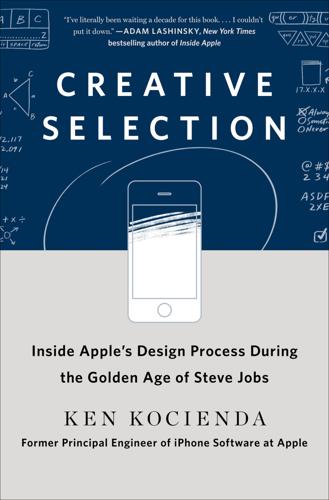
Creative Selection: Inside Apple's Design Process During the Golden Age of Steve Jobs
by
Ken Kocienda
Published 3 Sep 2018
With that, he slid his iPhone back into the front pocket of his jeans, straightened himself in his chair, and then turned slowly to face me. His eyes met mine. Over the years, many people have commented on Steve’s special ability to tell you something, whatever it was, no matter how implausible, and make you believe it. This reality distortion field, the RDF, has become legendary. Yet, in the moment Steve fixed his eyes on me, I felt an opposite force, the RDF with the polarity reversed. Like flipping on a light switch, Steve had turned on a no-nonsense zone around himself, one that banished all flummery and neutralized all pretense.
…
See also collaboration; craft; decisiveness; diligence; empathy; inspiration; taste Fadell, Tony, 138, 162 Feynman, Richard, 187–188 Finder, 47 FIXMEs (source code annotations), 77, 80–82, 86–88, 95 form factor, 137, 160, 182 Forstall, Scott, 234–236, 249 browser development and, 54, 70, 102, 113, 114 “eff grackles” demo and, 193–196 email editing project and, 115–117, 130 iPad keyboard demo and, 16–17, 24–28, 31–36 keyboard development and, 131–136, 138–139, 171, 193–196 Kocienda’s interview with, 47–48 multitouch multitasking gestures and, 257–261 tap target game and, 226–227 text entry and, 234 Ganatra, Nitin, 180–181, 185 Gates, Bill, 48 General Public License (GPL), 40 Giggly Demo (touchscreen keyboard autocorrection), 177–180, 185–186, 189–190, 192, 214 GNOME project, 43–44, 56 GNU Project, 40–43 Google, 42, 94, 114, 117, 133–134 A/B color choice algorithm, 212–213, 218, 242 Android, 3, 42 Maps, 53n Graziano, Joseph, 105 handheld personal digital assistant, 8, 160, 189–190, 192–193, 195, 256 handwriting recognition, 8, 160, 189–190, 192–193, 256 Heisenberg, Werner, 121 heisenbugs, 121, 126, 128 Hertzfeld, Andy, 42–43 Herz, Scott, 140, 226, 236, 248–249 home screen, 225–227, 241, 258–260 SpringBoard (icon launcher program), 137, 139–141, 180, 224–225 Human Interface (HI) team, 17–18, 136, 171, 229 HyperCard, 254 Hypertext Markup Language (HTML), 49, 121–131 IBM, 58 include directive, 72–73 insertion point, 118–122, 125–130, 139, 234–235, 241–242, 247 behavioral rules (simple and complicated), 119–121 movement, 118–130, 241–242, 247 inspiration Apple Way and, 251 definition of, 3, 247 demos and, 66, 157, 218, 250 essential element of success, 3, 5, 247–248, 250 Purple project (iPhone) and, 157, 228–229 Safari project and, 84–88, 112 success ratio to perspiration, 85–87, 217, 269–70n6 Internet Relay Chat (IRC), 91 intersections algorithms and heuristics, 240–247, 251 comfort levels, 224–227 Human Interface (HI) team, 17–18, 136, 171, 229 of iPhone and effort to create it, 246–247 of iPhone and skeptics, 246 of Kocienda and Jobs, 245–246 of Kocienda’s keyboard and world, 245 mental load, 232–237 of people and commitment, 249–251 Purple-era examples, 237–245 seven essential elements of success and, 247–248 smoothness, 227–230 of technology and liberal arts, 17, 221–245 iOS 4, 257 iOS 5, 258, 261 iOS 8, 235n iOS App Store, 12 iPad, 223, 248, 257–261 K48 (internal code name), 3 keyboard demo, 7–19, 25–37, 234, 257 keyboard development, 19–25 multitouch multitasking gestures, 257–258 iPhone glass display prototype, 208–209 Macworld Conference & Expo (San Francisco, 2007), 210, 221–222, 234, 245–246, 253-254 Macworld Expo (Boston, 1997), 48 Macworld Expo (San Francisco, 2003), 102–112 Patent, 239–240, 250 Purple (product code name), 9, 135 release date (June 29, 2007), 253–254 See also keyboard design and development iPod, 2–3, 47, 49, 132n, 138, 160, 162, 187 JavaScript, 49, 80 JavaScript: The Definitive Guide, 3rd Edition (Flanagan), 48 Jobs, Steve death of, 263 decisiveness of, 5, 30–37, 248 “Design is how it works,” 187, 245 email editing project, 116–117 Gates and, 48 interview with Brian Williams, 131 Kocienda’s iPad keyboard demo to, 7–19, 25–37, 234, 257 Macworld Conference & Expo (San Francisco, 2007), 210, 221–222, 234, 245–246, 253–254 Macworld Expo (Boston, 1997), 48 Macworld Expo (San Francisco, 2003), 102–112 management style, 217 on products and users, 226 Purple project (iPhone), 137–139, 149, 199, 207, 216, 222–223 Safari project and, 48–49, 53, 91–93, 100, 218 Johnson, Steven, 84 judgment, 4, 183–184, 214, 233, 242, 244, 248 Kant, Immanuel, 182–183 KDE (programming community), 56–57, 60, 67–70, 76 keyboard design and development bigger keys layout (iPad), 21–30, 32, 36, 234 Blob keyboard prototype, 145–146 can’t miss feature, 239 derby demo winner, 149–157, 171–172 empathy and, 182–183, 185, 188–189 iPad keyboard demo, 7–19, 25–37, 234, 257 iPad keyboard development, 19–25 letter pop-ups, 175, 201 likability, 160, 185–186, 189 keyboard design and development (continued) more-keys layout (iPad), 21–30, 36, 235 patents, 239–240 pattern skew algorithm, 203–206, 234, 243–244 product-killing potential and, 160 QuickType, 235n QWERTY, 146–148, 172–189, 196–197, 199–200, 248–249 as “science project,” 8–9 single-letter QWERTY keyboard, 172–176 taste and, 182–187 thumb-typing, 8, 139–141, 144, 151, 178, 185, 189, 235 touchscreen text entry, 159–190 Keynote (app), 26, 119, 160 KHTML, 69, 71 Kidder, Tracy, 117 KJS, 69, 78–79 Knuth, Donald, 97, 100, 184 Kocienda, Ken departure from Apple, 263–264 DRI for web page editing project, 113–117 interview with Apple, 47–49 iPad keyboard demo to Jobs, 7–19, 25–37, 234, 257 promotion to Principal Engineer, iPhone Software, 19, 257 Konqueror (open source browser), 53–79, 82, 103, 248, 250 Williamson’s “crystal ball” demo of, 53–66 Lamiraux, Henri, 258, 261–262 iPad keyboard demo and, 12–13, 14–15, 24–25, 30, 32–34, 36 Purple project (iPhone) and, 132–142, 150, 152, 157, 160, 180, 192–193, 208, 211 Lesser General Public License (LGPL), 75 licenses, 43, 50–51, 74–77, 88 likability, 160, 185–186, 189 Lingo (programming language), 20 Linux (open-source operating system), 42–43, 56–58, 68, 76 X Windows (graphical system), 57 living on dogfood, 170 Lombardi, Vince, 108–112, 126, 218, 271n5, 271n8, 272n9 Mac OS X, 14, 47–48, 51–52, 57–58, 68, 75 Macintosh (original 1984 model), 42–43, 223, 228, 254, 256 MacPaint, 254 Macworld Conference & Expo (San Francisco, 2007), 210, 221–222, 234, 245–246, 253–254 Macworld Expo (Boston, 1997), 48 Macworld Expo (San Francisco, 2003), 102–112 Madden, John, 110 Mail (app), 12, 36, 47, 118, 121, 139, 141, 180, 224 Matteson, Trey, 125–130, 247 Melton, Don, 44–49 Safari project, 50–61, 67–70, 74–75, 79, 82, 85–88, 93–97, 100, 102, 211–212, 214, 250 web page editing project, 112–114, 129 mental load, 232–236 Messages (app), 12 metadata, 124, 194 Microsoft, 39–40, 246 Internet Explorer, 48–50, 91–92, 107 PowerPoint, 26, 119 Windows, 2–3, 42–43, 45, 56–57, 104 Word, 119, 121 Mozilla, 45, 51–54, 59–60, 67, 69 multitouch-aware user interface system, 138–139 multitouch technology, 136–140, 150, 228–229, 230n, 239 multitouch multitasking gestures, 257–261 Nautilus, 43–44, 46, 218 Netscape, 39, 44–46, 50, 52, 58, 75, 211–212, 267n3 Newton (handheld personal digital assistant), 8, 160, 189–190, 192–193, 195, 256 Newton, James, 269n6 NeXT, 16, 53–54, 116, 126 AppKit, 126, 138 nondisclosure agreements (NDAs), 135, 199 Notes, 28, 36, 139, 141, 206, 209, 224 Objective-C (programming language), 137 On the Origin of the Species (Darwin), 215 open source movement, 45–46, 50–51, 54, 67, 75 Konqueror, 56–61, 64–79, 82, 102, 248, 250 Mozilla, 45, 51–54, 59–60, 67, 69 optimization, software, 95–102, 184, 243, 247, 251, 270n2 Ording, Bas iPad keyboard demo, 27–36, 257 iPad keyboard development, 18–26 “more keys” layout of, 21–25, 248 Purple project (iPhone), 137, 139, 175n, 249 OS/360 mainframe operating system project (IBM), 58 Page Load Test (PLT), 93–97, 100–102, 112, 240, 247 Pages (app), 119 pattern skew algorithm, 203–206, 234, 243–244 pinch to zoom, 257 Platform Experience, 47 pop-ups, 175, 175n, 201 QWERTY keyboard, 146–148, 172–189, 196–197, 199–200, 248–249 Radar (bug tracking program), 210–211, 253 reality distortion field (RDF), 27 release dates, 211–212 Macworld Conference & Expo (San Francisco, 2007), 210, 221–222, 234, 245–246, 253–254 Macworld Expo (Boston, 1997), 48 Macworld Expo (San Francisco, 2003), 102–112 Retina display, 10 Safari project beta release, 113 Black Slab Encounter (first web page loaded), 81–82, 85–89, 93, 102, 157, 163, 180, 248 compilation, 70–74, 77–78, 88 crystal ball demo (Konqueror web), 53–66 FIXMEs (source code annotations), 77, 80–82, 86–88, 95 football analogy to technology work on, 108–112 Konqueror and, 53–79, 82, 103, 248, 250 licensing, 43, 50–51, 74–77, 88 Macworld Expo (San Francisco, 2003) announcement, 102–112 Mozilla and, 45, 51–54, 59–60, 67, 69 naming of Safari, 102–103 Netscape and, 39, 44–46, 50, 52, 58, 75, 211–212, 267n3 open source movement and, 45–46, 50–60, 64–79 optimization, 95–102 Page Load Test (PLT), 93–97, 100–101, 112, 240, 247 porting strategy, 74–79, 87–88, 103, 156 source code, 40–42, 45–46, 50–52, 54, 65–88, 94–95, 100–101 speed and, 91–102, 107–112 Williamson’s “crystal ball” Konqueror demo, 39, 53–66 Schiller, Phil, 104, 161–163, 174, 182 Seagull Manager, 217 Serlet, Bertrand, 54, 70 shim (software translation layer), 57–60 Shneiderman, Ben, 228 “signing up” for work, 117, 135, 153, 258 Singin’ in the Rain (film), 62–65 Soul of a New Machine (Kidder), 117 source code, 40–42, 45–46, 50, 72–80, 94, 100–101, 264 FIXMEs (annotations), 77, 80–82, 86–88, 95 Konqueror, 65, 67–80 Mozilla, 50–52, 54 space bar, 20, 156, 176–178, 195 SpringBoard (home screen icon launcher program), 137, 139–141, 180, 224–225 Stallman, Richard, 40–43, 45, 74–75, 79–80, 82, 85–89, 103 Star Wars (film), 223 Starr, Bart, 108–109 Story of Great Inventions, The (Burns), 83–84 super-secret project, 132–135 Swan, Joseph, 84 Switcher marketing campaign, 104 Sync Services, 132–133 synchronization, data, 132–136 System 7, 125–126 2001: A Space Odyssey (film), 82 taste Apple Way and, 251 balance, 185–187 beauty, 187–188 definition of, 4, 248 taste (continued) essential element of success, 4, 248 judgment, 4, 183–184, 214, 233, 242, 244, 248 pleasing and integrated whole, 186–189 Purple project (iPhone) and, 157, 159, 182–189, 213–214, 242, 249–250 Tevanian, Avie, 70 text entry technology, 8, 157, 159–160, 185, 192, 197, 199, 234.

The Innovators: How a Group of Inventors, Hackers, Geniuses and Geeks Created the Digital Revolution
by
Walter Isaacson
Published 6 Oct 2014
Next came the production, led by engineers such as Teal. Finally, and equally important, there were the entrepreneurs who figured out how to conjure up new markets. Teal’s plucky boss Pat Haggerty was a colorful case study of this third step in the innovation process. Like Steve Jobs, Haggerty was able to project a reality distortion field that he used to push people to accomplish things they thought impossible. Transistors were being sold in 1954 to the military for about $16 apiece. But in order to break into the consumer market, Haggerty insisted that his engineers find a way to make them so that they could be sold for less than $3.
…
“This was the most wonderful offer in my life, to actually design a game that people would use,” he recalled. As Woz stayed up all night churning out elements of the design, Jobs sat on a bench to his left wire-wrapping the chips. Woz thought the task would take weeks, but in an early example of Jobs exerting what colleagues called his reality distortion field, he was able to stare unblinkingly at Woz and convince him he could do the job in four days. Steve Jobs (1955–2011) and Steve Wozniak (1950– ) in 1976. Jobs graphic on the original Macintosh in 1984. Richard Stallman (1953– ). Linus Torvalds (1969– ). The March 1975 first gathering of the Homebrew Computer Club came just after Wozniak had finished designing Breakout.
…
So Jobs wrote into his contract with Microsoft a clause that he believed would give Apple at least a year’s head start in having a graphical user interface. It decreed that for a certain period Microsoft would not produce for any company other than Apple any software that “utilizes a mouse or tracking ball” or had a point-and-click graphical interface. But Jobs’s reality distortion field got the better of him. Because he was so intent on getting Macintosh on the market by late 1982, he became convinced that it would happen. So he agreed that the prohibition would last until the end of 1983. As it turned out, Macintosh did not ship until January 1984. In September 1981 Microsoft secretly began designing a new operating system, intended to replace DOS, based on the desktop metaphor with windows, icons, mouse, and pointer.
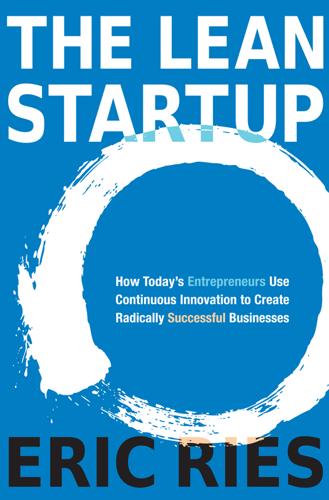
The Lean Startup: How Today’s Entrepreneurs Use Continuous Innovation to Create Radically Successful Businesses
by
Eric Ries
Published 13 Sep 2011
Rather than lamenting them, use these advantages to experiment under the radar and then do a public marketing launch once the product has proved itself with real customers.11 Finally, it helps to prepare for the fact that MVPs often result in bad news. Unlike traditional concept tests or prototypes, they are designed to speak to the full range of business questions, not just design or technical ones, and they often provide a needed dose of reality. In fact, piercing the reality distortion field is quite uncomfortable. Visionaries are especially afraid of a false negative: that customers will reject a flawed MVP that is too small or too limited. It is precisely this attitude that one sees when companies launch fully formed products without prior testing. They simply couldn’t bear to test them in anything less than their full splendor.
…
Pivot or Persevere Over time, a team that is learning its way toward a sustainable business will see the numbers in its model rise from the horrible baseline established by the MVP and converge to something like the ideal one established in the business plan. A startup that fails to do so will see that ideal recede ever farther into the distance. When this is done right, even the most powerful reality distortion field won’t be able to cover up this simple fact: if we’re not moving the drivers of our business model, we’re not making progress. That becomes a sure sign that it’s time to pivot. INNOVATION ACCOUNTING AT IMVU Here’s what innovation accounting looked like for us in the early days of IMVU.

The Internet Is Not the Answer
by
Andrew Keen
Published 5 Jan 2015
They thus present the Internet as a magically virtuous circle, an infinitely positive loop, an economic and cultural win-win for its billions of users. But today, as the Internet expands to connect almost everyone and everything on the planet, it’s becoming self-evident that this is a false promise. The evangelists are presenting us with what in Silicon Valley is called a “reality distortion field”—a vision that is anything but truthful. Instead of a win-win, the Internet is, in fact, more akin to a negative feedback loop in which we network users are its victims rather than beneficiaries. Rather than the answer, the Internet is actually the central question about our connected twenty-first-century world.
…
Unorthodoxy is the new orthodoxy in a world where the supposedly most different kind of thinkers—those who have escaped their traditional silo—are branded as the new rock stars. The only convention is to be unconventional and work for uncompanies, join unclubs, or attend unconferences. But today’s technology hipsters aren’t quite as cool as they imagine. Steve Jobs, the founding father of Silicon Valley’s “reality distortion field” and the original tech hipster, who idolized Bob Dylan and spent a summer in an ashram, also outsourced the manufacturing of Apple products in Foxconn’s notorious 430,000-person Shenzhen factory.5 And Jobs ran an astonishingly profitable company that, according to the US senator Carl Levin, has been cleverly avoiding paying the American government a million dollars of tax revenue per hour.6 Rather than “Think Different,” “Think Irresponsibly” might have been the mantra of the Apple accountants who organized this unethical and possibly even illegal scheme to avoid paying American tax.
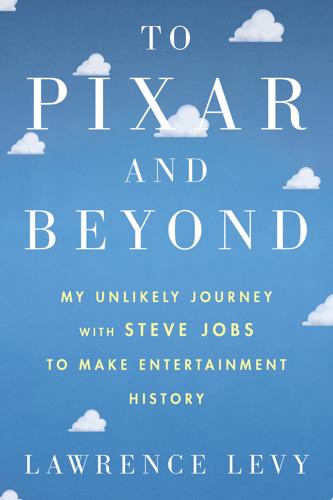
To Pixar and Beyond
by
Lawrence Levy
I thought it would be fascinating to at least see what Pixar was all about. By the time I was halfway home, though, my mind was back on the business issues; he should have mentioned them, and I should have pushed to hear about them. We had made a personal connection—better than I could have imagined—but how did I know Steve wasn’t putting up another “reality distortion field” for which he was notorious? That phrase had long been associated with Steve’s ability to make others believe almost anything, regardless of the business or market realities. Maybe he was weaving another fantasy, this time about Pixar. If I took this job and Pixar flamed out, as everyone I had spoken to seemed to think it would, the career I had so carefully built, along with my reputation, would take a huge blow.
…
See also Cowen and Company; Hambrecht and Quist; Robertson Stephens, investment bank company value, assessment of, 114–15, 118, 138 definition, 114 role in IPO, 114 trading price decision, 144–46 J Jennings, DJ, 203 Jobs, Steve, 3, 49, 137 Apple, relationship with, 3–4, 88, 108, 208–11 CEO, Pixar, 24, 210–11 commercial failures, 4, 11, 210 contact with, phone and face to face, 31–32, 50 Disney renegotiation and, 186 Disney’s largest stockholder, 221 Fortune story of Pixar, 200–202 interview and plan for Pixar, 5–6 office at Pixar, 57–58, 62 personal checks for Pixar shortfall, 10–11, 36 Pixar, retention of controlling stock, 88 Pixar IPO and, 5, 79, 100–101, 104, 127, 137 Pixar road show and, 147 “reality distortion field,” 6 relationship with Pixar, 27, 57–58, 210 Toy Story opening box excitement, 155 Jobs’s vision for Pixar aspirations for Pixar, 5, 31, 47, 65–66 difficulty in succeeding, 74 hurdles for Pixar to succeed, 79 process of, 66 return to Apple and, 209 risk and raising capital for filmmaking, 77 “John Lasseter School of Animation Direction,” 165 Juskiewicz, Christina, 239 K Kabloona (Poncins), 235 Katzenberg, Jeffrey, 49, 167, 168, 179 Kerwin, Pam, 19, 26–27, 62–63 RenderMan manager, 30–31 video games, possibility of revenue from, 79 Knick Knack, 38 Krantz, Matt, 214 Kübler-Ross, Elisabeth, 235 L LA Times, 157 box office numbers, 158 Lasseter, John, 13, 17–18, 94, 164, 168–72 chief creative officer, 221 film credit question, 205 Hollywood opening, 150 Pixar’s brain trust, 164–65 leverage and negotiation, definitions of, 175 Levy, Hillary, 20, 39, 47, 50, 58, 59, 60, 63, 89, 105, 138, 151, 154, 208, 230, 237, 238, 240, 243, 247 education and career, 7 faith in Steve Jobs, 25 family ties and, 7 Juniper founding, 239–40 Levy, Jason, 7, 55, 59, 64, 149–52, 247 Levy, Jenna, 63, 151, 247 Levy, Lawrence accident (automobile) and insight on Pixar, 242–43 accident (rollerblading) and change in attitude, 58–62 background, 5, 7 CFO of Pixar, 159 comparison to Marlin in Nemo, 223–24 at Electronics for Imaging, 22–23 executive vice president and CFO, Pixar, 24 family history, 228–29 interviews with Jobs and Pixar, 5, 20 joining Pixar’s board of directors, 232 Juniper founding, 239–40 personal relationship with Jobs, 63, 208, 211–13, 247–48 religion and philosophy, 229 sabbatical to study Eastern ideas, 231–32 Levy, Sarah, 7, 56, 64, 148, 149–52, 247 live-action film business, 68–70 Pixar, consideration of, 71–72 Lucas, George, 4, 9, 93 Lucasfilm history of, 9 imaging computer, 4 Pixar, computer graphics division, 140 Luxo Jr., 13, 37–38 Best Animated Short Film nomination, 38 M Magic Mountain, The (Mann), 229 Martin, Eff, 117, 118, 122 McArthur, Sarah, 166 McCaffrey, Mike, 131–32, 148, 156 Mickey Mouse, 67 Microsoft, 34–36 Middle Way, 235–36, 245 relationship to Pixar, 243–44, 246 Monsters, Inc., awards, 214–15 Moore, Gary, 184 Moore, Rob, 187–88, 191, 195, 197, 198 Morgan Stanley, 115–17 Moriarty, Pam, 239 Morrissette, Adele, 135–36 Murti, T.R.V., 235 N Nagarjuna, 229 Nelson, Randy, 166 Netscape IPO, 104 Morgan Stanley and, 115, 117 trading price, 143–45 New York Times, 198–99, 217–18, 221 Newman, Randy, 18–19 NeXT Computer, 3–4 Apple purchase, 207 commercial failure, 11, 210 O Ohlone Tribe, 82, 244 On Death and Dying (Kübler-Ross), 235 P Parikh, Milan, 203 Perennial Philosophy, The (Huxley), 235 Phillips, Diane, 203 photoscience, computer images to film, 54–55 Pixar company culture, 27–28, 83, 85 e-mail to the company, 232–33 employee feelings toward Jobs, 28, 202 location and physical facility, 6, 9, 246–47 “Production Babies,” 63, 151 story team, 164–65 Pixar, business plan brand recognition, 98, 174 expansion and talent recruitment, 165–66 film release schedule, 97–98, 164, 165 increased share of profits, 96, 174 production costs to be paid by Pixar, 96–97 Pixar, business side, 19–20.
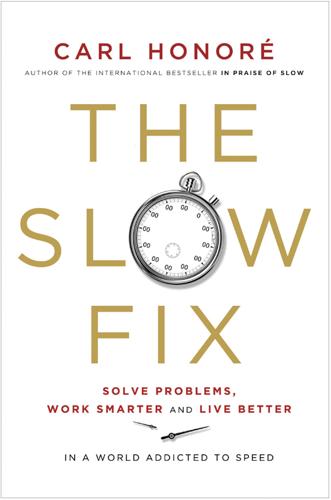
The Slow Fix: Solve Problems, Work Smarter, and Live Better in a World Addicted to Speed
by
Carl Honore
Published 29 Jan 2013
When confronted by awkward facts that challenge our favoured view – proof that our quick fix is not working, for instance – we tend to write them off as a rogue result, or as evidence that “the exception proves the rule.” This is known as the confirmation bias. Sigmund Freud called it “denial,” and it goes hand in hand with the legacy problem and the status-quo bias. It can generate a powerful reality distortion field. When told by doctors they are going to die, many people block out the news entirely. Sometimes we cling to our beliefs even in the face of slam-dunk evidence to the contrary. Look at the cottage industry in Holocaust denial. Or how, in the late 1990s, Thabo Mbeki, then the president of South Africa, refused to accept the scientific consensus that AIDS was caused by the HIV virus, leading to the death of more than 330,000 people.
…
Though Apple relies on collaboration and teamwork to forge its game-changing gadgets, it also encourages project leaders to act as “auteurs,” who lead from the front and stamp their personality all over the final product. Jonathan Ive was so central to designing the iMac, iPod and iPad that he is sometimes credited with inventing the devices. And then there was the auteur-in-chief, Steve Jobs. Friends and foes likened his knack for winning over people to a “reality distortion field.” His keynote speeches were hailed as master-classes in the art of persuasion. By the time he died in 2011, Jobs had achieved the kind of rock star status seldom granted to CEOs, with fans leaving flowers, messages and even apples with a bite taken out of them at Apple stores around the world.

From Counterculture to Cyberculture: Stewart Brand, the Whole Earth Network, and the Rise of Digital Utopianism
by
Fred Turner
Published 31 Aug 2006
See Streeter, “That Deep Romantic Chasm.” 5. Gitlin, Sixties, 307. 6. Lehr and Rossetto, “New Right Credo,” 24; Rossetto, interview, January 24, 2005. 7. Wolff, Burn Rate, 33 –34. 8. “They were some of many people zooming by [and] not particularly memorable,” Kelly recalled during an interview, July 27, 2001. 9. Keegan, “Reality Distortion Field.” 10. Kelly, interview, July 27, 2001. 11. Gordon, “Does the ‘New Economy’ Measure Up?” 50. For more on developments in personal computing technology in this period, see Ceruzzi, History of Modern Computing (2003), 309 –12. [ 286 ] N o t e s t o Pa g e s 2 1 3 _ 2 2 2 12. Abbate, Inventing the Internet, 181, 196 –99.
…
Shiller, Irrational Exuberance, 20 –21, quoted in Thrift, “Romance Not the Finance Makes Business Worth Pursuing,” 426; Alan Greenspan, “The American Economy in a World Context,” at the 35th Annual Conference on Bank Structure and Competition, Federal Reserve Bank of Chicago, May 6, 1999, available at http://www.federalreserve.gov/ board-docs/speeches/1999/19990506.htm, quoted in Gordon, “Does the ‘New Economy’ Measure Up?” 49. 17. Frank, One Market Under God, xiv, 356. 18. Rossetto quoted in Keegan, “Reality Distortion Field”; Battelle quoted in Smith, “WiReD.” 19. Kelly, interview, July 27, 2001. 20. Smith, “WiReD.” 21. Rossetto, interview, January 24, 2005; Rossetto, Metcalfe, et al., Wired business plan. 22. “Reader Report,” internal document, Wired, January 1996, no pagination (in Louis Rossetto’s personal collection). 23.
…
Kyoto Prize Commemorative Lecture, Inamori Foundation, Kyoto, Japan. Delivered November 11, 2004. Kay, Lily E. “How a Genetic Code Became an Information System.” In Systems, Experts, and Computers, edited by Thomas P. Hughes and Agatha C. Hughes, 463 –92. Cambridge, MA: MIT Press, 2000. Keegan, Paul. “Reality Distortion Field.” UpsideToday, January 31, 1997. Kelly, Kevin. “The Birth of a Network Nation.” New Age Journal, October 1984. ———. “The Computational Metaphor.” Whole Earth 95 (Winter 1998): 5. ———. “George Gilder: When Bandwidth Is Free.” Wired, September–October 1993. ———. “Nerd Theology.” Technology in Society 21 (1999): 387–92. ———.
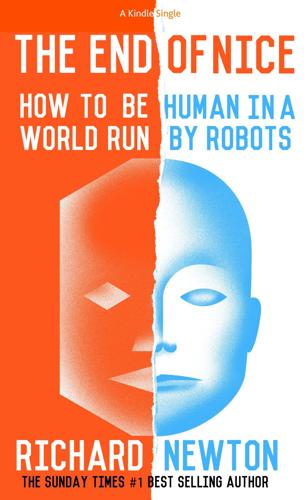
The End of Nice: How to Be Human in a World Run by Robots (Kindle Single)
by
Richard Newton
Published 11 Apr 2015
He told Forbes magazine: “If there were moments I was stubborn in my life it was because I was really… REALLY believing in something that I wanted to see become a reality and every now and then people around me didn’t totally get it.” Selling and persuasion. That’s what it takes to put your vision into someone else’s head. At Apple they had a name for it. The Reality Distortion Field was the label they gave Steve Jobs’ pressure-selling charisma and its effect on those around him. You’ll have noticed something else about the list of successes a few paragraphs earlier. It’s how often they failed. And that’s the corollary of trying to innovate (or deviate) from the norm.
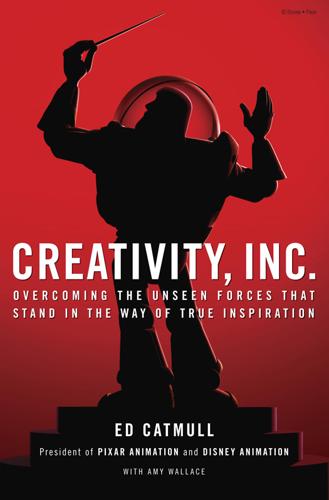
Creativity, Inc.: Overcoming the Unseen Forces That Stand in the Way of True Inspiration
by
Ed Catmull
and
Amy Wallace
Published 23 Jul 2009
Steve’s transformation was an active one. He continued to engage; he just changed the way he went about it. There is a phrase that many have used to describe Steve’s knack for accomplishing the impossible. Steve, they say, employed a “reality distortion field.” In his biography of Steve, Walter Isaacson devoted an entire chapter to it, quoting Andy Hertzfeld, a member of the original Mac team at Apple, saying, “The reality distortion field was a confounding mélange of a charismatic rhetorical style, indomitable will, and eagerness to bend any fact to fit the purpose at hand.” I heard the phrase used fairly often around Pixar, too. Some people, after listening to Steve, would feel that they had reached a new level of insight, only to find afterward that they could not reconstruct the steps in his reasoning; then the insight would evaporate, leaving them scratching their heads, feeling they had been led down the garden path.

Why Buddhism is True
by
Robert Wright
At some level, it’s always the same thing: human beings operating under the influence of human brains whose design presupposed their specialness. That is, human beings operating under the influence of the reality-distortion fields that control us in many and subtle ways, convincing us that we and ours are in the right, that we are by nature good, and that, when we do the occasional bad thing, it’s not a reflection of the “real us”; whereas they and theirs aren’t in the right and aren’t by nature good, and when they do the occasional good thing, it’s not a reflection of the “real them.” And it doesn’t help matters that these reality-distortion fields often magnify, even out-and-out fabricate, the threat posed by them and theirs.

Dawn of the New Everything: Encounters With Reality and Virtual Reality
by
Jaron Lanier
Published 21 Nov 2017
But this is about my life, and the truth is that I had moments later in the 1980s when I got pretty full of myself. I was asking for it. The feeling of combining romance with self-importance is so powerful that it realigns reality, even in the perception of people around you. Like Steve Jobs’s famous “reality distortion field.” This wasn’t lust, exactly, but something more powerful; a deep human business, ancient, like discovering a hidden sexual organ that communicates with the great men of history and brings you into their immortal communion. Inner demons of vanity congeal into a seductive monster that envelops you and intones, “The great scientists and conquerors, the ones we remember, you will join their ranks.”
…
See also specific languages projected augmented reality proprioception protocols Prozac psychedelic drugs psychedelic magazines PTSD Punch and Judy avatars punch cards Pynchon, Thomas quantum computing quantum cryptography quantum field theory racism radio Radio Shack radio waves Ramachandran, V. S. Rand, Ayn Rathinavel, Kishore Rational thought RB2 (Reality Built for Two) Reagan, Ronald Réalité virtuelle reality. See physical reality reality distortion field Reality Engines Reality Masher Reality on Wheels real time 3-D computers real-time shadows Reddit redundancy refraction reincarnation religious tolerance REM sleep Rent-a-Mom Republican Party retina retinal displays Rheingold, Howard Rhemann, Christoph Rhythm Gimbal rights, abstract vs. economic Robinette, Warren robotic arm robotic broomstick robotic hand robotic Loch Ness-type creature robotic mimic of mimic octopus robots robust system rock climbing Rockwell, Norman Rocky’s Boots Roddenberry, Gene Roko’s Basilisk Rosedale, Philip Rosen, Joe Rosenberg, Scott Rosenthal, Sally Roswell, New Mexico rounds, startups and Royal portable typewriter Rumi Russian intelligence sales tax Salisbury, Ken Sandin, Dan San Francisco San Francisco Bay Bridge Santa Cruz Sante, Luc Satava, Rick Sault Ste.
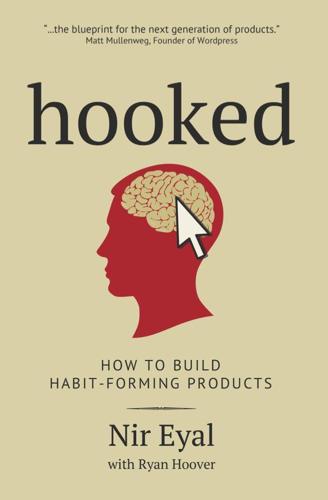
Hooked: How to Build Habit-Forming Products
by
Nir Eyal
Published 26 Dec 2013
Fitness apps, charity Web sites, and products that claim to suddenly turn hard work into fun often fall into this quadrant. Possibly the most common example of peddlers, though, is in advertising. Countless companies convince themselves they’re making ad campaigns users will love. They expect their videos to go viral and their branded apps to be used daily. Their so-called reality distortion fields keep them from asking the critical question, “Would I actually find this useful?”10 The answer to this uncomfortable question is nearly always no, so they twist their thinking until they can imagine a user they believe might find the ad valuable. Materially improving users’ lives is a tall order, and attempting to create a persuasive technology that you do not use yourself is incredibly difficult.
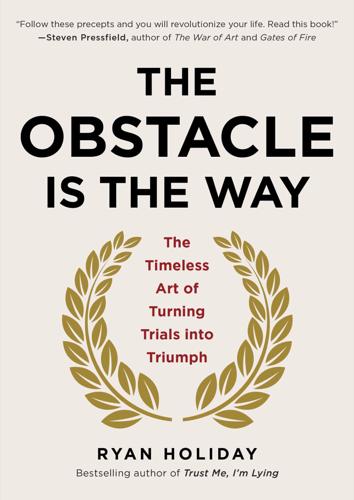
The Obstacle Is the Way: The Timeless Art of Turning Trials Into Triumph
by
Ryan Holiday
Published 30 Apr 2014
Ignore what it “represents” or it “means” or “why it happened to you.” There is plenty else going on right here to care about any of that. THINK DIFFERENTLY Genius is the ability to put into effect what is in your mind. There’s no other definition of it. —F. SCOTT FITZGERALD Steve Jobs was famous for what observers called his “reality distortion field.” Part motivational tactic, part sheer drive and ambition, this field made him notoriously dismissive of phrases such as “It can’t be done” or “We need more time.” Having learned early in life that reality was falsely hemmed in by rules and compromises that people had been taught as children, Jobs had a much more aggressive idea of what was or wasn’t possible.
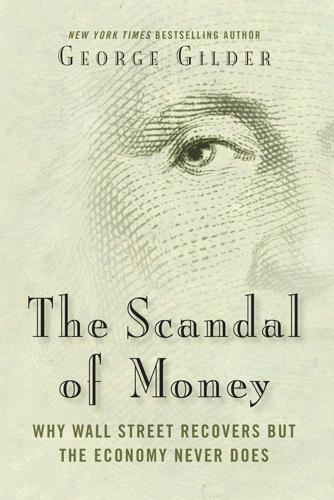
The Scandal of Money
by
George Gilder
Published 23 Feb 2016
We must defer to the immemorial laws of money, recognizing again the flaws of monetarism—what money is and what it is not. Based on time, real money is scarce, valuable, irreversible, and governed by entropy. It can be used to prioritize all the trade-offs and accounts of entrepreneurial life. Without time constraints, anything seems possible, particularly in the reality-distortion fields of government power. Money imposes time limits on enterprise and restrictions on government power. Real money brings reality to economic life. By mutilating the rigorous time relations of money, politicians or central banks halt learning and shrink the time horizons of our lives. “Flash boys” trading in milliseconds do not refine the market, they merely oscillate it.

Radical Uncertainty: Decision-Making for an Unknowable Future
by
Mervyn King
and
John Kay
Published 5 Mar 2020
Jobs’s biographer, Walter Isaacson, writes of his subject’s ‘reality distortion field’. The phrase was adopted from Star Trek by one of Apple’s first software designers, who identified his CEO’s approach as ‘a confounding melange of a charismatic rhetorical style, indomitable will, and eagerness to bend any fact to fit the purpose at hand’ – characteristics similar to those identified by Churchill’s biographers. 33 Strikingly, however, the first half of Isaacson’s book, which deals with the period prior to Jobs’s 1997 return to Apple, contains sixteen references to the ‘reality distortion field’, the remainder contains only three.
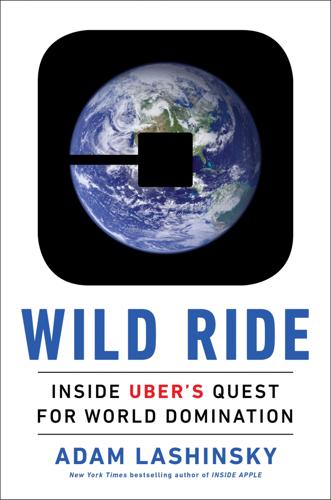
Wild Ride: Inside Uber's Quest for World Domination
by
Adam Lashinsky
Published 31 Mar 2017
The Apple CEO was a master at instilling cognitive dissonance, persuading customers to overlook (usually fixable) defects in his products as well as the troubling working conditions of the contractors who made them. Similarly, Amazon’s Jeff Bezos gets away with jerking around just about everyone—suppliers, employees, shippers, other merchants—so long as he delivers the lowest prices to customers. So far, Kalanick has succeeded neither at creating the type of “reality-distortion field” for which Jobs was famous nor at convincing the lion’s share of Uber’s riders and drivers to overlook his callous statements and outward lack of empathy for their plight. He has been troubled enough at how he and his company are perceived to try to do something about it: devoting more resources to keeping riders happy, trying to fix a badly broken customer- and driver-support infrastructure, attempting to tone down incendiary comments on the advice of highly paid image consultants.
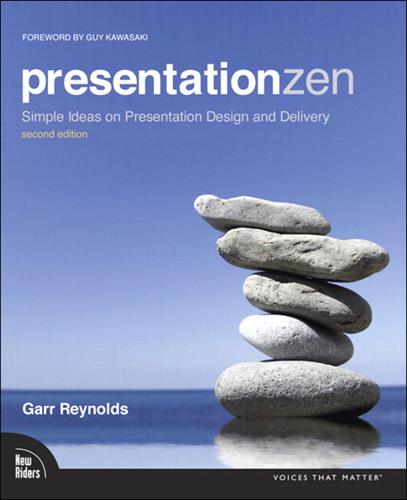
Presentation Zen
by
Garr Reynolds
Published 15 Jan 2012
Yet the point is not to speak like Steve Jobs—or move around like Steve Ballmer—but to find your own level of passion and bring that honest enthusiasm out in your work for the world to see in your own style. Be positive, upbeat, humorous. Jobs was a very serious person, but he came across in presentations as an extremely positive person because he deeply believed in his content. He was upbeat and positive about the future, even in hard times. Reality distortion field or not, this positive energy is the image he projected on stage. You cannot fake this—you must believe in your content or you cannot sell it. Jobs also brought a little humor to his talks. This did not mean telling jokes. His humor was more subtle. Making people laugh occasionally through subtle uses of irony is engaging.

Move Fast and Break Things: How Facebook, Google, and Amazon Cornered Culture and Undermined Democracy
by
Jonathan Taplin
Published 17 Apr 2017
The next day he returned, and a chastened PARC team showed him everything. Jobs went back to Cupertino and called a board meeting, saying he had to build a new computer based on the PARC architecture and that it should not be backward-compatible with the existing Apple II. The board thought he was crazy, but Jobs applied his charisma—his “reality distortion field”—and got his way. Xerox got its Apple shares, and in December of 1980, Apple went public at $22 per share. Xerox’s holdings were instantly worth millions. The first version of a computer using the PARC architecture, the Lisa, was a commercial failure, but when Jobs introduced the Macintosh in an iconic advertisement that aired during the 1984 Super Bowl, the long-awaited vision of the future arrived.

Valley of Genius: The Uncensored History of Silicon Valley (As Told by the Hackers, Founders, and Freaks Who Made It Boom)
by
Adam Fisher
Published 9 Jul 2018
Steve is now going to be the CEO of Pixar, et cetera, et cetera. Alvy Ray Smith: It was when I looked at the prospectus for the IPO when I first realized that Steve lies. He claimed to be the cofounder of Pixar and the CEO since its founding. In the prospectus! Cofounder and CEO forever! Bullshit. Both of those are wrong: lies. I don’t like this “reality distortion field” idea. He lies. But you know his genius was to take the company public on nothing. The movie wasn’t even a hit yet, and there was essentially no cash at all. But he saw his chance to make his $50 million back. And he did. Alan Kay: Steve just hung in there and hung in there until they got into the sweet spot where everything that they knew suddenly was applicable in a way that made commercial sense.
…
Like everybody would wear a tuxedo with sneakers, or serve Kobe beef on a cheap ol’ napkin. It was some form of apology or some sort of a desperate cry to not be just about the money. Jamis MacNiven: It was all very interesting, and we were younger then, and we thought it would go on forever. John Battelle: There was this sort of reality distortion field around the entire internet, that was like, “Everything is changing, and I want a ticket to the change. Where do I buy a ticket to the change?” And so if you wanted to buy a ticket to the change in, say, retail, you would buy a share of Webvan. If you wanted a ticket to the change in travel, you would buy a ticket to Expedia or Priceline.

Empire of AI: Dreams and Nightmares in Sam Altman's OpenAI
by
Karen Hao
Published 19 May 2025
“Fundamentally when you raise money from someone, what you’re doing is telling a story about the future of whatever your project is, which involves that project, that company becoming an extraordinary success,” Ralston says. “Sam can tell a tale that you want to be part of, that is compelling, and that seems real, that seems even likely.” Ralston likens it to Steve Jobs’s reality distortion field. “Steve could tell a story that overwhelmed any other part of your reality,” he says, “whether there was a distortion of reality or it became a reality. Because remember, the thing about Steve is he actually built stuff that did change your reality. It wasn’t just distortion. It was real.
…
See also regulations pure language hypothesis, 129–30, 131, 158–59, 234, 318 Q Q*, 373–74 quantum computing, 141 Queer in AI, 161, 418 Quilicura, Chile, 285–88, 290, 296–99 Quora, 7, 183, 321, 324 R racism, 52–53, 56, 91, 108–9, 114, 161–64 Radford, Alec, 121–24, 126, 137 CLIP, 235 departure of, 406 GPT-1, 123, 124, 235 GPT-2, 135 Raji, Deborah, 56–57, 108, 161, 238, 306–7, 310–12, 419–20 Ralston, Geoff, 34, 36, 142 Ramesh, Aditya, 235, 236 Ramos, Sonia, 281–82, 284–85, 295 rapid generalization, 154 Raven, 279 reality distortion field, 34 Reddit, 34, 151, 163 redistribution of power, 418–21 “red teaming,” 179–80, 380 Regalado, Antonio, 186, 187 regulations (regulatory policy), 25, 27, 84, 86, 134, 136, 265, 272, 301, 303–4, 306–7, 311–12, 357, 358, 384 reinforcement learning from human feedback (RLHF), 123, 137, 146, 155, 176, 213–23, 245, 248, 315, 381, 387 Remotasks, 203–4, 218–23, 416 Renaldi, Adi, 186 renewable energy, 77, 275, 277 resiliency screening, 208 ResNet, 309–10 Retro Biosciences, 186–87 Rick and Morty (cartoon), 68 Rickover, Hyman G., 144 Rihanna, 1 Roberts Companies, 29 Robinson, David, 358 Roble, James, 329 robotics, 66, 69, 71, 130, 150, 156, 321 Rodríguez, Tania, 289–90 rogue AI, 55, 56, 145, 230, 231–32, 250, 306, 314, 319–20, 419 Roose, Kevin, 112, 264 Rose, Charlie, 40 Rosenblatt, Frank, 90, 94–95, 97 Rosewood Hotel dinner, 28, 46, 47, 48, 55 Rubik’s Cube, 71 Russia, 146 Ukraine war, 52, 191 Rwanda, 102, 260 S Safe Superintelligence, 405 safety.

The Narcissist You Know
by
Joseph Burgo
Utterly lacking in humility, they announce again and again that they are the smartest, most insightful, most creative person in the room. And sometimes they actually are. THINK DIFFERENT People who worked closely with Steve Jobs had a special name for his uncanny ability to impose his vision upon others. With reference to an early Star Trek episode, his colleagues at Apple called it the reality distortion field. Andy Hertzfeld, a member of the Macintosh team, describes it as “a confounding mélange of a charismatic rhetorical style, indomitable will, and an eagerness to bend any fact to fit the purpose at hand.”6 According to biographer Walter Isaacson, Jobs “would assert something—be it a fact about world history or a recounting of who suggested an idea at a meeting—without even considering the truth.
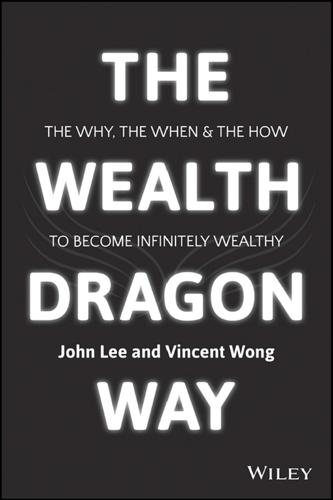
The Wealth Dragon Way: The Why, the When and the How to Become Infinitely Wealthy
by
John Lee
Published 13 Apr 2015
If only it had let go of the nuts, it would have been able to run free. If I hadn't let go of that initial £10,000 that I paid to Ying Tan to help me get started in property investment, I wouldn't be where I am now. What's the Limit to What You Can Achieve? Steve Jobs had what his coworkers called a reality distortion field. He would ask a developer how long it would take to perfect a certain product or piece of software, and if she said 18 months he'd tell her to do it in 2. And he always got what he wanted. He knew no bounds, no limits. He used his charm and persuasion to distort the reality of the developer's mind so that she stopped looking at the reasons why it would take so long and started to believe she could do it in two months.

Elon Musk
by
Walter Isaacson
Published 11 Sep 2023
“If you set an aggressive schedule that people think they might be able to make, they will try to put out extra effort,” he says. “But if you give them a schedule that’s physically impossible, engineers aren’t stupid. You’ve demoralized them. It’s Elon’s biggest weakness.” Steve Jobs did something similar. His colleagues called it his reality-distortion field. He set unrealistic deadlines, and when people balked, he would stare at them without blinking and say, “Don’t be afraid, you can do it.” Although the practice demoralized people, they ended up accomplishing things that other companies couldn’t. “Even though we failed to meet most schedules or cost targets that Elon laid out, we still beat all of our peers,” Mueller admits.
…
Ellison, who had been a mentor of Steve Jobs, gave Musk a piece of advice: he should not get into a fight with Apple. It was the one company that Twitter could not afford to alienate. Apple was a major advertiser. More importantly, Twitter could not survive unless it continued to be available in the iPhone’s App Store. In some ways, Musk was like Steve Jobs, a brilliant but abrasive taskmaster with a reality-distortion field who could drive his employees crazy but also drive them to do things they thought were impossible. He could be confrontational, with both colleagues and competitors. Tim Cook, who took over Apple in 2011, was different. He was calm, coolly disciplined, and disarmingly polite. Although he could be steely when warranted, he avoided unnecessary confrontations.

The Charisma Myth: How Anyone Can Master the Art and Science of Personal Magnetism
by
Olivia Fox Cabane
Published 1 Mar 2012
He starts revealing more about his own personal thoughts and views about how his company is doing, how he’s doing, what his hopes and dreams and fears are—even his insecurities. Your job is to listen attentively to each sentence and, using one of the techniques above, aim to break the flow when you think the potential backlash for these revelations would be too damaging. When you turn on your charisma full blast, you create a kind of reality distortion field around you. It’s a bit like hypnosis; people can go into an altered state in your presence. And just as a hypnotist must take care when leading people out of a trance, so must you. You’re putting them under the spell of your presence, so help them ease out of the altered state as well. You’re in the Spotlight and Held to Higher Standards Celebrities and CEOs have at least one thing in common: they’re always on display.
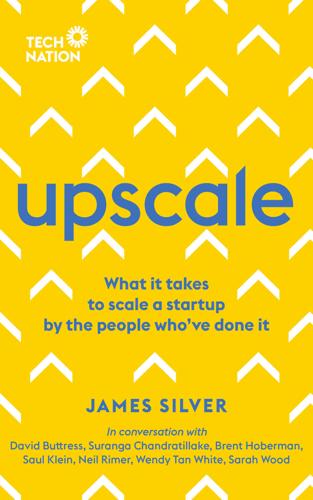
Upscale: What It Takes to Scale a Startup. By the People Who've Done It.
by
James Silver
Published 15 Nov 2018
‘We all go through those moments, and as a CEO your job is to be the cheerleader at those times to stop your team from looking down into that abyss and deciding to quit. That’s a really important thing, and the bigger the organisation grows, the more people you have who are likely to look at that irrationality; and [simultaneously] the more constituents you have, whether it’s shareholders or customers and so on. ‘[Your role as CEO] is to create a reality-distortion field around what you’re doing, and somehow give people the belief and hope that it’s going to work. That always exists, and you can never escape that part of the job.’ Mind the gap But then the question becomes: how much time must you devote to this, and what’s your personal threshold for the gap between the reality you know to be true and the version of it you’re projecting to your employees, customers and investors?

Brave New Work: Are You Ready to Reinvent Your Organization?
by
Aaron Dignan
Published 1 Feb 2019
These luddites, laggards, and late adopters refuse to engage with our change programs. Can’t they see that this change is inevitable and better for everyone? The train is leaving the station, and they better get on board. Right? Wrong. This cliché perception of resistance leads us astray. It’s a reality-distortion field that blunts our empathy and our humility. People can and do change. They just do so when it makes sense to them. People don’t resist all change; they resist incoherent change poorly managed. Perhaps we’re asking people to take risks while their incentives push them to avoid failure at all costs.
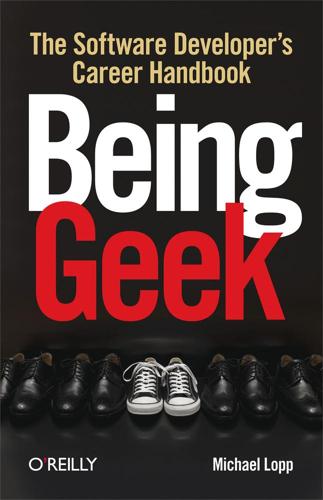
Being Geek: The Software Developer's Career Handbook
by
Michael Lopp
Published 20 Jul 2010
Leaders optimize reality to their favor, and the more powerful and influential they are, the more they can define a comfortable reality for themselves and their team. The more this reality conflicts with the rest of the company, the more your team will need to adapt when the Maestro leaves the building with her personal reality distortion field, and that's where you need to pay attention. But Pay Attention: What you're going to learn in the first month after an influential leader has left the group is how much her view of the goals of your group differ from the goals set by the company. Ideally, your former leader did a fine job of translating corporate vision into regionally relevant goals.

The Power of Glamour: Longing and the Art of Visual Persuasion
by
Virginia Postrel
Published 5 Nov 2013
The reason lies in the nature of glamour. It is not a product or style but a form of communication and persuasion. It depends on maintaining exactly the right relationship between object and audience, imagination and desire. Glamour is fragile because perceptions change. Glamour creates a “reality distortion field”—Silicon Valley’s capsule description of Steve Jobs’s persuasive magic—and because of its artifice, it is always suspect. The real puzzle is not why glamour keeps disappearing but why it survives at all. Its mystery and grace violate our self-proclaimed commitment to honesty, transparency, comfort, realism, practicality, even overt sexuality.

How Music Got Free: The End of an Industry, the Turn of the Century, and the Patient Zero of Piracy
by
Stephen Witt
Published 15 Jun 2015
Microsoft, 23 times larger by market capitalization, hadn’t been able to do it. What chance did Apple have? Brandenburg never even met Jobs personally. He did not worship at the altar of Macintosh, and in casual conversation referred to the company’s customers as “brainwashed.” He lived outside of Apple’s reality distortion field, and later, when the company sent him a confidential proposal for a new mp3 player, he started on the back page with the technical specs. Apple wasn’t a threat to established markets, and Brandenburg was, in his own words, “not sentimental” about technology. In the summer of 2001 he traveled to Hong Kong to give another lecture.
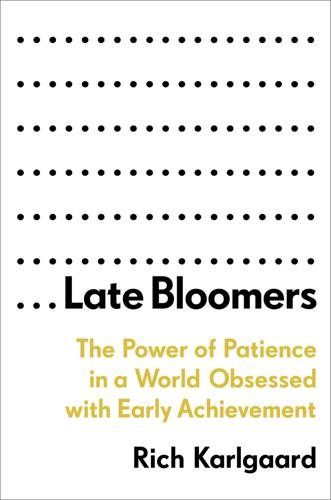
Late Bloomers: The Power of Patience in a World Obsessed With Early Achievement
by
Rich Karlgaard
Published 15 Apr 2019
Her slow-blinking stare, it was said, could bore holes through your eye sockets. She also took on Jobs’s less admirable traits. She ran Theranos like a police state, obsessed with preventing employees from talking about their work with each other. She became a master at employing Jobs’s “reality distortion field”—a fictional narrative about her own genius and wondrous Theranos products that were unyielding to the facts. Jobs was only twenty-one when he cofounded Apple, and twenty-five when Apple first sold its stock to the public, making Jobs a young celebrity and centi-millionaire. Holmes felt increasingly pressured in a race to glory and early wealth against her old idol.

Green Swans: The Coming Boom in Regenerative Capitalism
by
John Elkington
Published 6 Apr 2020
Among other things, he felt hemmed in by competitors, by the financial markets, by regulators, by campaigners, by the media, by the interests of employees and communities, by the company’s history and earlier decisions, and—crucially—by events. His company was Monsanto, eventually sold to Bayer, with dire results for the latter. If your work takes you regularly into the world’s boardrooms and C-suites, it really is hard to miss the reality distortion fields such places generate. Black and Gray Swan risks seem remote, almost certainly covered by insurance policies or the responsibility of governments, while Green Swan opportunities are the stuff of speculation by delusional do-gooders. Such reality distortion shapes incoming information in both direct and indirect ways, creating worldviews that may differ considerably from those held by other people elsewhere in the same organization, let alone in the wider world.

Life After Google: The Fall of Big Data and the Rise of the Blockchain Economy
by
George Gilder
Published 16 Jul 2018
I was visiting Dally to find out. A fifty-seven-year-old, brown-haired engineer with a black hat and backpack and hiking boots, he is dressed Silicon-Valley-mountaineer style to take me on a high-altitude adventure in microchips and software, ideas and speculations, Google maps and Elon Musk “reality distortion fields” down Route 101 at five o’clock on a late-August Friday evening. It’s not quite Doctor Brown’s Back to the Future ride in a DeLorean, but it will suffice for some modest time-travel in the history of computing. Since writing his college thesis in the late 1970s, Dally has rebelled against the serial step-by-step computing regime known as the von Neumann architecture.

Volt Rush: The Winners and Losers in the Race to Go Green
by
Henry Sanderson
Published 12 Sep 2022
It was at Reed that Friedland met a young Steve Jobs. The two became close friends and Friedland was ‘one of the few people in Jobs’s life who were able to mesmerize him’, his biographer wrote.8 Jobs thought of Friedland, who was four years older, as a sort of guru and adopted some of his key charismatic traits, including the famous ‘reality distortion field’ that he used to compel others to do what they thought was impossible. They were both into eastern religions and spirituality. Friedland had travelled to India in the summer of 1973 to meet a famous Hindu guru Neem Karoli Baba and Jobs took the same trip a year later. Friedland was a father figure to Jobs and a seeker ‘in the tradition of Ram Dass’, the American spiritual teacher, according to Jobs’s former girlfriend Chrisann Brennan.

Enshittification: Why Everything Suddenly Got Worse and What to Do About It
by
Cory Doctorow
Published 6 Oct 2025
And because we’re all still there on Amazon, buying Prime and starting (and ending) our purchase planning with Amazon’s enshittified search results, the merchants who rely on selling to us are stuck there, too, earning less and less from every sale. The platform has turned into a pile of shit, and we’re at the bottom of it. Case Study: iPhone Stage One: Good to Users It wasn’t merely Steve Jobs’s legendary “reality distortion field.” The iPhone really was a revolutionary product. It built on the elegance of the iPod, a device that “just worked.” Plug a new iPod into your computer, and in a few seconds all the music on your laptop would be mirrored into a pocket-sized gadget, along with your playlists and ratings. The iPhone extended that easy synchronization to email, calendars, and a host of other utility features that were easier to use and more powerful than those of its rivals, like BlackBerry and Android.
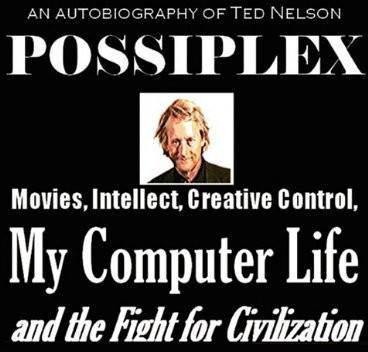
Possiplex
by
Ted Nelson
Published 2 Jan 2010
I do believe Steve Jobs based the entire style and persona of the Apple corporation on the attitude of my book Computer Lib—the attitude of creative defiance that I offered the reader, and that Jobs invited the Apple customers to share.* * Creative defiance has always been my attitude, and is the essence of Bohemianism.) Jobs’ “reality distortion field”— his cloud of ideas so often disdained by journalists-- has proven to be reality itself.* But the question is, where did Jobs get these ideas originally? I believe they were pretty much set forth in Computer Lib two years before the Apple I. * As of this writing, the value of Apple— its market cap— has just passed that of Microsoft.
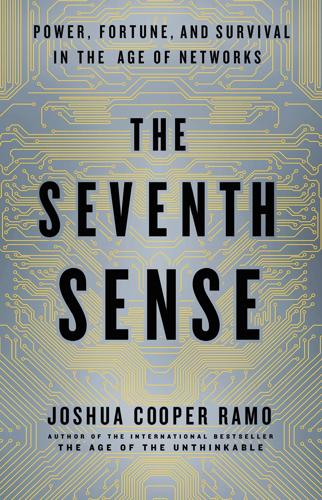
The Seventh Sense: Power, Fortune, and Survival in the Age of Networks
by
Joshua Cooper Ramo
Published 16 May 2016
Hillis has a magnetic intellectual charisma, as you may have guessed by now. An afternoon with him resembles nothing so much as lingering in a mental theme park: roller coasters of big ideas (a ten-thousand-year clock!) mixed with smaller, sugary treats (how to design a better fence post). No wonder he fit in at Disney. Critics accused Steve Jobs of having a “reality distortion field” in which the Apple founder’s charisma bludgeoned the boundaries of the practical. Hillis, by contrast, has a sort of “reality enhancement field” in which much of the world as seen through his eyes is filled with possibility. From an early age, Hillis had been interested in the dream of a thinking robot.
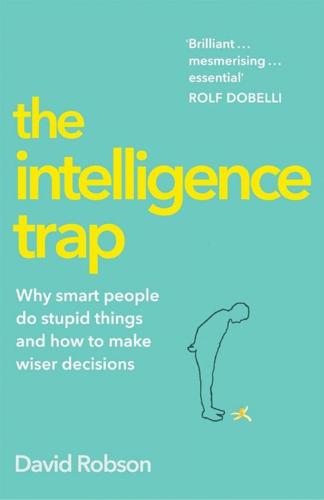
The Intelligence Trap: Revolutionise Your Thinking and Make Wiser Decisions
by
David Robson
Published 7 Mar 2019
The historian of science Mark Essig writes that ‘the question is not so much why Edison’s campaign failed as why he thought it might succeed’.59 But an understanding of cognitive errors such as the sunk cost effect, the bias blind spot and motivated reasoning helps to explain why such a brilliant mind may persuade itself to continue down such a disastrous path. The co-founder of Apple, Steve Jobs, was similarly a man of enormous intelligence and creativity, yet he too sometimes suffered from a dangerously skewed perception of the world. According to Walter Isaacson’s official biography, his acquaintances described a ‘reality distortion field’ – ‘a confounding mélange of charismatic rhetorical style, indomitable will, and eagerness to bend any fact to fit the purpose at hand’, in the words of his former colleague Andy Hertzfeld. That single-minded determination helped Jobs to revolutionise technology, but it also backfired in his personal life, particularly after he was diagnosed with pancreatic cancer in 2003.
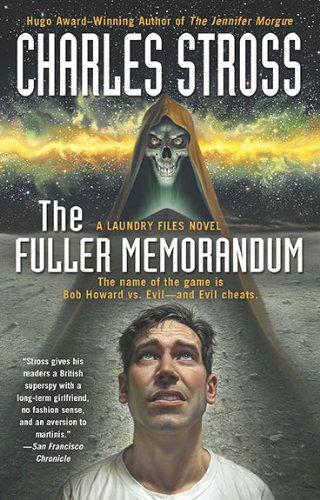
Fuller Memorandum
by
Stross, Charles
Published 14 Jan 2010
I shudder faintly, but Mo is visibly distracted. "Hang on. They've ported OFCUT to the iPhone? What does it look like?" "I'll show you . . ." Fifteen minutes later I am on my way to the office, sans shiny. Mo is still sitting at the kitchen table with a cold mug of coffee, in thrall to the JesusPhone's reality distortion field, prodding at the jelly-bean icons with an expression of hapless fascination on her face. I've got a horrible feeling that the only way I'm going to earn forgiveness is to buy her one for her birthday. Such is life, in a geek household. ACTUALLY, I HAVE A MOTIVE FOR GOING IN TO WORK THAT I don't feel like telling Mo about.
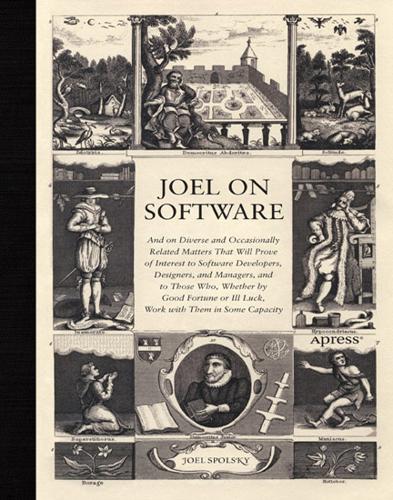
Joel on Software
by
Joel Spolsky
Published 1 Aug 2004
The chicken-and-egg problem, and variants thereof, is the most important element of strategy to understand. Well, OK, you can probably live without understanding it: Steve Jobs practically made a career out of not understanding the chicken-and-egg problem, twice. But the rest of us don't have Jobs's Personal Reality Distortion Field at our disposal, so we'll have to buckle down and study hard. The classic domain of chicken-and-egg problems is in software platforms. But here's another chicken-and-egg problem: Every month, millions of credit card companies mail out zillions of bills to consumers in the mail. People write paper checks, stuff them in trillions of envelopes, and mail them back.
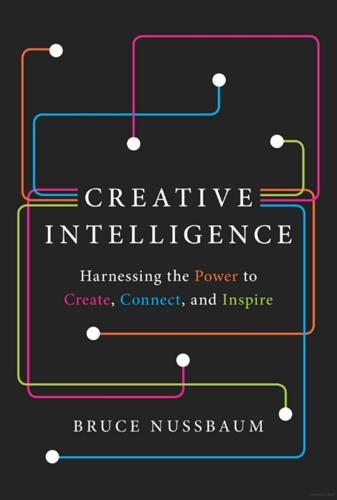
Creative Intelligence: Harnessing the Power to Create, Connect, and Inspire
by
Bruce Nussbaum
Published 5 Mar 2013
Jobs progressively increased his level of charisma over the years, choosing a signature style of personal dress, the simple black turtleneck; learning to introduce products with Broadway-level drama, whipping off a cloth to reveal a new offering and promoting what Apple employees called his “reality distortion field,” demanding even that which appears to be impossible. I saw Mark Zuckerberg for the first time at the World Economic Forum in Davos in 2009. He was sitting in front of several hundred people in a large conference room on a panel about the future of mobile along with Chad Hurley and a number of other high-tech luminaries.
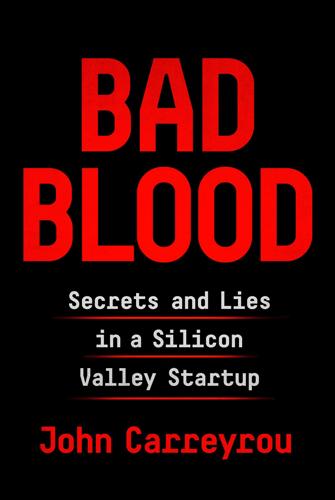
Bad Blood: Secrets and Lies in a Silicon Valley Startup
by
John Carreyrou
Published 20 May 2018
The odds that Holmes could pull off this latest Houdini act while under criminal investigation were very long, but watching her confidently walk the audience through her sleek slide show helped crystallize for me how she’d gotten this far: she was an amazing saleswoman. She never once stumbled or lost her train of thought. She wielded both engineering and laboratory lingo effortlessly and she showed seemingly heartfelt emotion when she spoke of sparing babies in the NICU from blood transfusions. Like her idol Steve Jobs, she emitted a reality distortion field that forced people to momentarily suspend disbelief. The spell was broken, however, during the question-and-answer session when Stephen Master, an associate professor of pathology at Weill Cornell Medical Center in New York and one of three panelists invited onstage to ask Holmes questions, pointed out that the miniLab’s capabilities fell far short of the original claims she had made.

Brotopia: Breaking Up the Boys' Club of Silicon Valley
by
Emily Chang
Published 6 Feb 2018
In another era, investors would have steered clear of a college dropout making such an outrageous claim. But in the 1990s, this sort of over-the-top bravado was exactly what people expected from young tech geniuses. When Steve Jobs used his charisma to overcome or hide inconvenient facts, people called it his reality distortion field. As Liemandt demonstrated, Jobs was far from the only entrepreneur adept at distorting reality. Liemandt himself admitted to the Stanford Daily newspaper that the initial product “sucked,” but once they finally got it to work, Trilogy sold a major software deal to Hewlett-Packard. Silicon Graphics, a large technology firm that had pulled out of a deal with Trilogy, came back to the table asking to renegotiate.
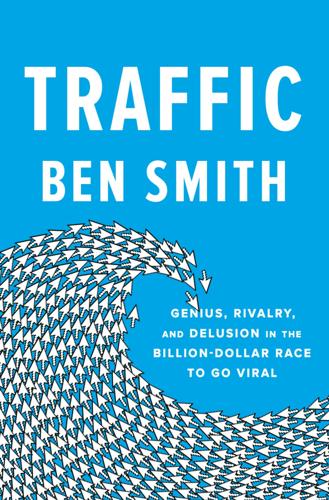
Traffic: Genius, Rivalry, and Delusion in the Billion-Dollar Race to Go Viral
by
Ben Smith
Published 2 May 2023
Armstrong belonged to a particular category of media executive, familiar to old and new media alike, a born dealmaker who could convince anyone of anything. Like many a great salesperson, he seemed to be able to convince himself of pretty much anything as well. He was a perfect mark for Arianna, whose own reality-distortion field had created an image of The Huffington Post—a mecca for young viewers, powered by earnest concern about politics and “citizen journalists” blogging for free—that bore little resemblance to the dark arts KT, Jonah, and Breanna had mastered of gaming Google and getting middle-aged men to click on links that promised photographs of attractive young women.
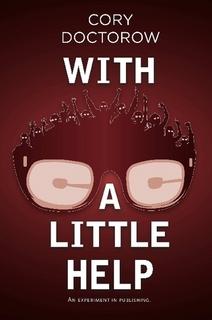
With a Little Help
by
Cory Efram Doctorow
,
Jonathan Coulton
and
Russell Galen
Published 7 Dec 2010
When he started doing it to national banks, put a run on the dollar, broke the Fed, well, that's when we all knew that he was someone who was special, someone who could create signals that went right to your hindbrain without any critical interpretation." 2261 "Scary." 2262 "Oh yes. Very. In another era they'd have burned him for a witch or made him the man who cut out your heart with the obsidian knife. But here's the thing: he could never, ever kid me. Not once." 2263 "And you're alive to tell the tale?" 2264 "Oh, he likes it. His reality distortion field, it screws with his internal landscape. Makes it hard for him to figure out what he needs, what he wants, and what will make him miserable. I'm indispensable." 2265 He had a sudden, terrible thought. He didn't say anything, but she must have seen it on his face. 2266 "What is it? Tell me." 2267 "How do I know that you're on the level about any of this?
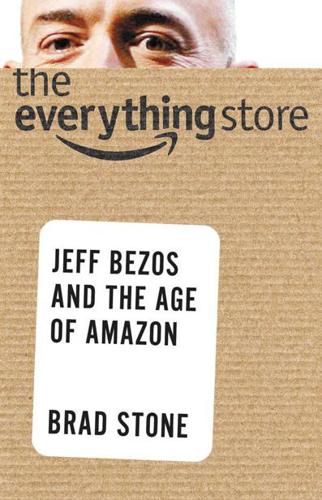
The Everything Store: Jeff Bezos and the Age of Amazon
by
Brad Stone
Published 14 Oct 2013
Despite his famously hearty laugh and cheerful public persona, he is capable of the same kind of acerbic outbursts as Apple’s late founder, Steve Jobs, who could terrify any employee who stepped into an elevator with him. Bezos is a micromanager with a limitless spring of new ideas, and he reacts harshly to efforts that don’t meet his rigorous standards. Like Jobs, Bezos casts a reality-distortion field—an aura thick with persuasive but ultimately unsatisfying propaganda about his company. He often says that Amazon’s corporate mission “is to raise the bar across industries, and around the world, for what it means to be customer focused.”1 Bezos and his employees are indeed absorbed with catering to customers, but they can also be ruthlessly competitive with rivals and even partners.
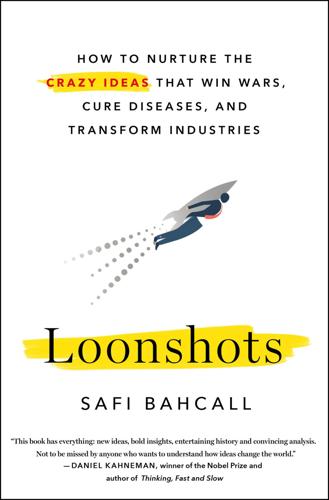
Loonshots: How to Nurture the Crazy Ideas That Win Wars, Cure Diseases, and Transform Industries
by
Safi Bahcall
Published 19 Mar 2019
WSJ, Sep. 16, 1985. Nauenberg, Michael. “Robert Hooke’s Seminal Contribution to Orbital Dynamics.” Phys. Persp. 7 (2005): 4. Newsweek. “Mr. Chips: Steve Jobs Puts the ‘Wow’ Back in Computers.” Oct. 24, 1988. Newton, Isaac. Letter to Edmond Halley, June 20, 1686. Pitta, Julia. “The Steven Jobs Reality Distortion Field.” Forbes, Apr. 29, 1991, 137. Pollack, Andrew. “The Return of a Computer Star.” NY Times, Oct. 13, 1988. ________. “A Co-Founder of Next Is Quitting the Company.” NY Times, May 4, 1991. Price, David A. The Pixar Touch. Knopf, 2008. Rechtshaffen, Michael. “Toy Story.” Hollywood Reporter, Nov. 20, 1995.

Think Like a Rocket Scientist: Simple Strategies You Can Use to Make Giant Leaps in Work and Life
by
Ozan Varol
Published 13 Apr 2020
In the popular children’s book Harold and the Purple Crayon, the four-year-old protagonist has the power to create things just by drawing them. There’s no path to walk on, so he draws a path. There’s no moon to light his path, so he draws the moon. There are no trees to climb on, so he draws an apple tree. Throughout the story, his imagination brings things into existence.17 Thought experiments are your very own reality-distortion field, your choose-your-own-adventure game—your purple crayon. The purple crayon was Einstein’s favorite scientific tool, one that he carried with him even as an adult.18 As he wrote to a friend, “You and I never cease to stand like curious children before the great mystery into which we were born.”19 Centuries earlier, Isaac Newton purportedly used similar words in describing himself as “a boy playing on the seashore… whilst the great ocean of truth lay all undiscovered before me.”20 Although Einstein and Newton managed to retain their childlike curiosity, it is beaten out of most people.
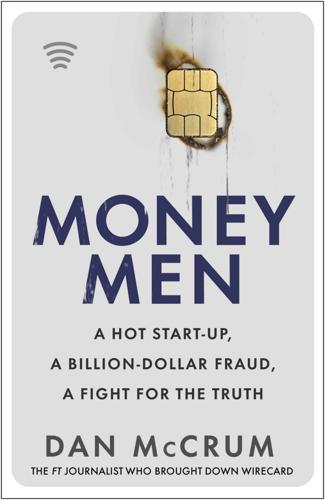
Money Men: A Hot Startup, a Billion Dollar Fraud, a Fight for the Truth
by
Dan McCrum
Published 15 Jun 2022
Unable to open it, the police wheeled it out as well. Singapore had decisively moved to investigate, and it seemed like they wanted to brag about it. An employee tipped us off about the raid, and Stefania Palma was surprised to get an on-the-record confirmation from the usually taciturn police department. Wirecard’s reality distortion field was in operation, meanwhile; its staff in Singapore simply had a prearranged chat with officers to help them with their inquiries, it claimed, but the share price suggested Markus Braun was no longer getting the benefit of the doubt. It had crept as high as €136 after the billionaire CEO’s reassuring chat with investors.
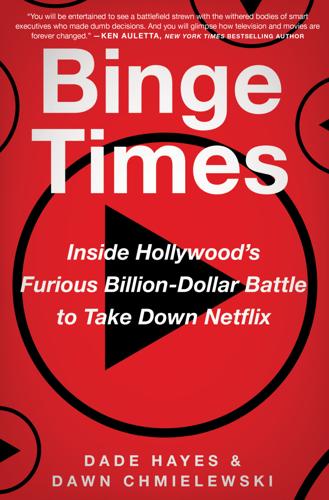
Binge Times: Inside Hollywood's Furious Billion-Dollar Battle to Take Down Netflix
by
Dade Hayes
and
Dawn Chmielewski
Published 18 Apr 2022
Katzenberg held fast to his original theory, though, believing eighteen- to thirty-four-year-olds would eagerly seek out a few moments of diversion from the bleak news of the deadly virus’s relentless spread. “Here is a moment in time when, collectively, all of us are stressed out, anxious, depressed, threatened. Life as we know it has just been turned upside down and inside out,” said Katzenberg, summoning a reality distortion field that was every bit as potent as Steve Jobs’s. “Here comes something that’s new, it’s unique, it’s different. As you know, the entire goal of our enterprise is to inform and to entertain and inspire.” Whitman had planned a $400 million “rolling thunder” marketing campaign to grab the attention of a distracted world, kicking off Quibi’s launch with a glitzy, star-studded Hollywood red-carpet event, with one hundred or so celebrities parading before the world’s entertainment press.
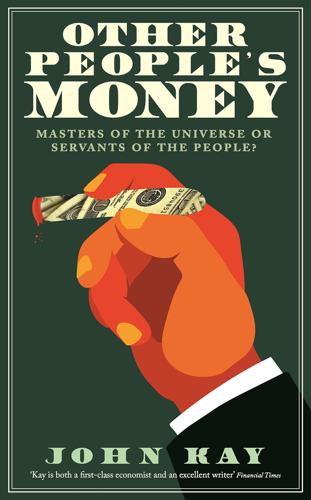
Other People's Money: Masters of the Universe or Servants of the People?
by
John Kay
Published 2 Sep 2015
They need to allow for control illusion and recognise that people chase their dreams. Probabilistic reasoning does not play a large part in our lives because the situations in which it can usefully be applied are limited. We deal with radical uncertainty through storytelling, by constructing narratives. Steve Jobs’s biographer, Walter Isaacson, wrote of his subject’s ‘reality distortion field’, and the same phrase might equally have been applied to Ford or Disney.29 This, not the Panglossian world of ‘the Greenspan doctrine’, is the world in which business is conducted and securities are traded. The reality of market behaviour, as the psychologist David Tuckett recorded in his interviews, makes little use of probabilistic thinking but relies on conviction narratives – stories that traders tell themselves, and reinforce in conversation with each other.

Machines of Loving Grace: The Quest for Common Ground Between Humans and Robots
by
John Markoff
Published 24 Aug 2015
“It’s a funny story,” Jobs replied. He hadn’t had any idea how to find the small development team, but he had hunted around. Because every iPhone developer had to supply a phone number to the App Store, Apple’s CEO found Kittlaus’s number in his developer database. The team’s first foray into the legendary “reality distortion field”—Jobs’s personal brand of hypnotic charisma—wasn’t promising. Jobs invited the trio of Siri developers to his house in the heart of old Palo Alto. Jobs’s home was a relatively low-key 1930s Tudor-style set next to an empty lot that he had converted into a small grove of fruit trees and a garden.

This Machine Kills Secrets: Julian Assange, the Cypherpunks, and Their Fight to Empower Whistleblowers
by
Andy Greenberg
Published 12 Sep 2012
So they rented a Ryder truck, hauled the washing machine–size monster to Boston along with its equally large storage module, got them running, and then tried to digitally penetrate them, simply to see if they could. The first night Mudge entered the L0pht, the elite group of hackers were struck by his technical genius, his heavy-metal hair, and the onstage charisma and extroversion that he’d learned as a performing musician. “He had that reality distortion field,” says Space Rogue. “He could see we needed a front man, and that’s what he became.” At the time, the L0pht had a de facto leader in Count Zero, one of the group’s two cofounders. But Count Zero was going through a messy divorce that kept him away from the L0pht for months at a time, long enough for Mudge to stake his claim.

The Black Box Society: The Secret Algorithms That Control Money and Information
by
Frank Pasquale
Published 17 Nov 2014
Apple did not say why it removed the app shortly after it first appeared. It might have been Guideline 16.1, the catchall ban on “objectionable content,” or 15.3, which forbids depictions of “a real government or corporation, or any other real entity.” Or the topic might have just menaced the company’s famous “reality distortion field.”30 Political speech is especially protected under the First Amendment, but Apple isn’t bound by the Bill of Rights.31 Zittrain anticipated opportunistic behavior like this in his 2008 book The Future of the Internet— And How to Stop It. His work is a complex and nuanced call for technology companies to reflect public 64 THE BLACK BOX SOCIETY values in their decisions about what apps to make accessible.

The One Device: The Secret History of the iPhone
by
Brian Merchant
Published 19 Jun 2017
You feel it at the civic center as tech executives walk onstage brandishing the latest world-changing gadget. And the secrecy generated beforehand, the sense that you’re being allowed a peek under the hood is—undeniably—a little bit thrilling. But as gadget-review editor Mark Spoonauer reminds me, “There are journalists who actually try to stay away from the ‘reality distortion field,’ because what you don’t want to do is get caught up in the excitement. Because you have to be objective.” It’s just really hard to do after Apple delivers you the sublime. After the presentation, which concluded with a performance by the Australian pop singer Sia, who stood motionless in a giant wig and sang her hits while a kid bounced around and did cartwheels, the press is funneled into a room, stage right, that resembles a miniature version of an Apple Store—a month into the future, when the products just announced onstage will be available.

Make Your Own Job: How the Entrepreneurial Work Ethic Exhausted America
by
Erik Baker
Published 13 Jan 2025
Jobs believed that for Apple to work, he needed to be on the ground, watching, praising, criticizing, exhorting, needling—responding to work as it was produced with his trademark summary judgments, “insanely great” and “total shit,” and spurring on employees to meet seemingly impossible deadlines with what was known in the Apple offices, referencing Star Trek, as Jobs’s “reality distortion field.”32 When, in the early 1980s, the Apple board made clear that they would prefer to hire a professional administrator as CEO, Jobs appointed himself head of the division tasked with developing the Macintosh. The Mac team was a quintessential “ad-hocratic” structure: a team of specialists assembled for a specific purpose that would disband once it had accomplished its goal.

The Chairman's Lounge: The inside story of how Qantas sold us out
by
Joe Aston
Published 27 Oct 2024
This was alternative universe stuff: to announce, the very day a court ruled that you violated Commonwealth law and your executives gave artificial and even deliberately false evidence, that your actions were lawful and your executives were honest. It also suggested preternatural speed of reading, reflection and response. There had been no substantive engagement by Qantas with the judgment, parts of which were deeply humiliating to the company. Inside the reality-distortion field swathing the airline’s executive floor, nobody seemed to ask, Have we handled ourselves properly here? This was not a group of professionals prepared to reflect on the wisdom of their own conduct in pursuing a course of action contrary to expert advice that it was high risk. Rather, they were deflecting, lashing out, jutting their jaws.
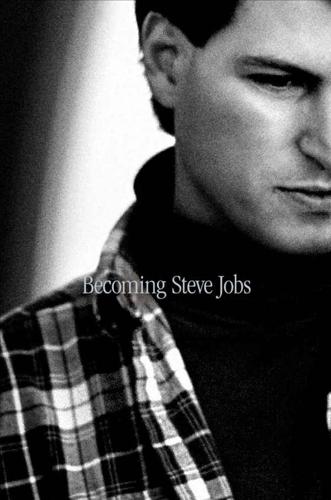
Becoming Steve Jobs: The Evolution of a Reckless Upstart Into a Visionary Leader
by
Brent Schlender
and
Rick Tetzeli
Published 24 Mar 2015
So when he started limiting access, and cooperating with the press only when he needed to promote his products, the tales from those early days at Apple became the conventional wisdom about his personality and thinking. Perhaps that’s why the posthumous coverage reflected these stereotypes: Steve was a genius with a flair for design, a shaman whose storytelling power could generate something magical and maleficent called a “reality distortion field”; he was a pompous jerk who disregarded everyone else in his single-minded pursuit of perfection; he thought he was smarter than anyone else, never listened to advice, and was an unchanging half-genius, half-asshole from birth. None of this gibed with my experience of Steve, who always seemed more complex, more human, more sentimental, and even more intelligent than the man I read about elsewhere.
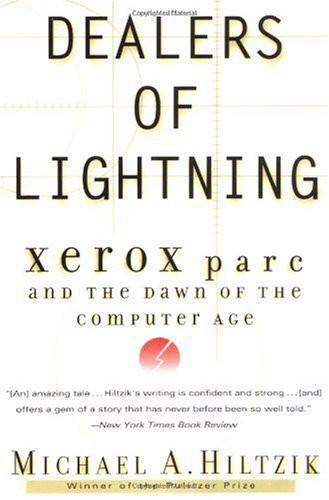
Dealers of Lightning
by
Michael A. Hiltzik
Published 27 Apr 2000
Thwart him, and it scarcely mattered whether you were an eighth-grade dropout or a Ph.D. in electrical engineering; he would trash your arguments like they were so much chaff in the blades of a thresher. Jobs’s associates had a label for his unyielding confidence in his own vision and judgment. They called it his “reality distortion field.” He lived securely within his worldview and seemed to exist chiefly for the purpose of imposing it on others. He had a way of seeming at once intolerably brash and older than his years. Those were the qualities that enabled him to hold the experienced investors of XDCrapt by relating the story of how he had founded Apple.
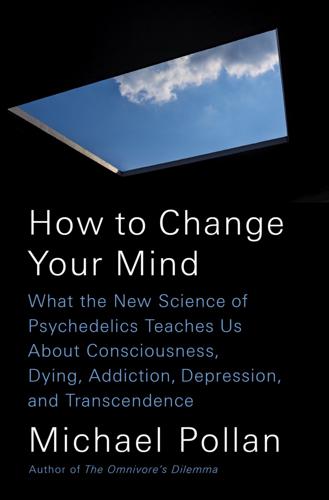
How to Change Your Mind: What the New Science of Psychedelics Teaches Us About Consciousness, Dying, Addiction, Depression, and Transcendence
by
Michael Pollan
Published 30 Apr 2018
But in fact neither proposition is even remotely true. Leary played an important role in the modern history of psychedelics, but it’s not at all the pioneering role he wrote for himself. His success in shaping the popular narrative of psychedelics in the 1960s obscures as much as it reveals, creating a kind of reality distortion field that makes it difficult to see everything that came either before or after his big moment onstage. In a truer telling of the history, the Harvard Psilocybin Project would appear more like the beginning of the end of what had been a remarkably fertile and promising period of research that unfolded during the previous decade far from Cambridge, in places as far flung as Saskatchewan, Vancouver, California, and England, and, everywhere, with a lot less sound and fury or countercultural baggage.
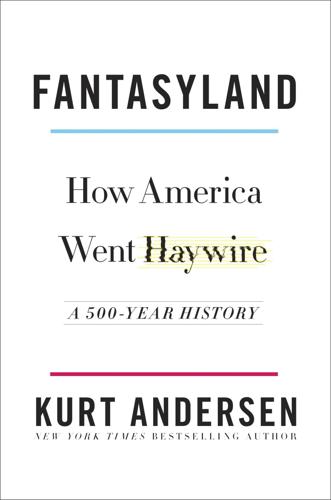
Fantasyland: How America Went Haywire: A 500-Year History
by
Kurt Andersen
Published 4 Sep 2017
At Amway, Mary Kay, Walmart, Chick-fil-A, Apple, the Oprah Winfrey empire, Martha Stewart in her heyday, Whole Foods, and Amazon—among employees as well as customers—those businesses cultivated a cultish, evangelical vibe. And maybe most of all at Apple, one of my own brand faiths, where the acid-tripping megalomaniac Steve Jobs famously radiated a “reality distortion field” that made people believe whatever he wanted them to believe. “In his presence,” said the Apple underling who borrowed the idea and phrase from a Star Trek episode, “reality is malleable.” Another employee explained her boss to Jobs’s biographer in terms of the Bay Area religious entrepreneur Jim Jones, who became famous when Apple was also a Bay Area start-up: “It didn’t matter if he was serving purple Kool-Aid.
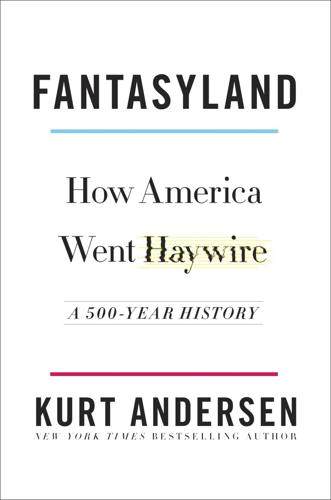
Fantasyland
by
Kurt Andersen
Published 5 Sep 2017
At Amway, Mary Kay, Walmart, Chick-fil-A, Apple, the Oprah Winfrey empire, Martha Stewart in her heyday, Whole Foods, and Amazon—among employees as well as customers—those businesses cultivated a cultish, evangelical vibe. And maybe most of all at Apple, one of my own brand faiths, where the acid-tripping megalomaniac Steve Jobs famously radiated a “reality distortion field” that made people believe whatever he wanted them to believe. “In his presence,” said the Apple underling who borrowed the idea and phrase from a Star Trek episode, “reality is malleable.” Another employee explained her boss to Jobs’s biographer in terms of the Bay Area religious entrepreneur Jim Jones, who became famous when Apple was also a Bay Area start-up: “It didn’t matter if he was serving purple Kool-Aid.

For the Win
by
Cory Doctorow
Published 11 May 2010
“You think that this happened overnight? You think that this problem just cropped up yesterday and I tossed in the towel?” Oh. “Oh.” “Yeah. We’ve been tanking for months. I’ve been standing on the bridge of this sinking ship with my biggest smile pasted on for two consecutive quarters now. I’ve thrown out the most impressive reality distortion field the business world has ever seen. Just because I’m giving up doesn’t mean I gave up without a fight.” Suzanne had never been good at condolences. She hated funerals. “Landon, I’m sorry. It must have been very hard—” “Yeah,” he said. “Well, sure. I wanted you to have the scoop on this, but I had to talk to the press once the story broke, you understand.”
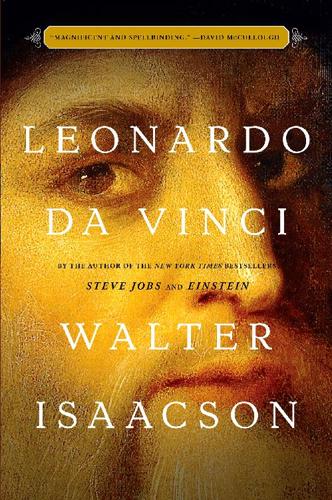
Leonardo Da Vinci
by
Walter Isaacson
Published 16 Oct 2017
Like the construction of his flying machines, they were too fanciful to execute. This inability to ground his fantasies in reality has generally been regarded as one of Leonardo’s major failings. Yet in order to be a true visionary, one has to be willing to overreach and to fail some of the time. Innovation requires a reality distortion field. The things he envisioned for the future often came to pass, even if it took a few centuries. Scuba gear, flying machines, and helicopters now exist. Suction pumps now drain swamps. Along the route of the canal that Leonardo drew there is now a major highway. Sometimes fantasies are paths to reality.

The Price of Time: The Real Story of Interest
by
Edward Chancellor
Published 15 Aug 2022
Elizabeth Holmes, the twenty-something founder of Theranos, claimed to have developed technology for conducting a wide range of medical tests from a small drop of blood extracted from the finger. Holmes modelled herself on Apple’s Steve Jobs, right down to the black turtleneck sweaters. Like her hero, she created a ‘reality distortion field’. Impossible things could be achieved if only people acted as if they were possible. Hyperbole was the order of the day. Holmes claimed her ‘mini lab’ to be the ‘most important thing humanity has ever built’. In fact, Theranos’s black-box technology didn’t function as described. Long before this was discovered, the company achieved a $9 billion valuation on Silicon Valley.
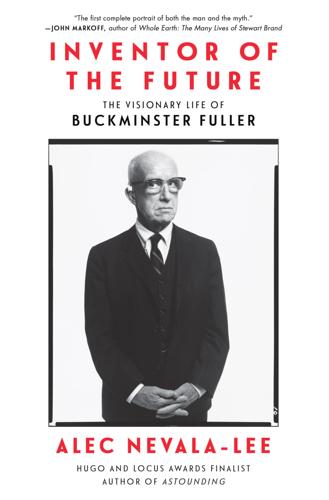
Inventor of the Future: The Visionary Life of Buckminster Fuller
by
Alec Nevala-Lee
Published 1 Aug 2022
Since his death, it has become widely known that he invented elements of his biography, which the late scholar Loretta Lorance described accurately as “a public relations tool.” He had to become what others believed he was, and by the end, he was the only living source for many of the facts. Fuller’s writings and talks overflowed with misinformation and outright falsehoods, which he methodically built into the reality distortion field that allowed him to achieve so much in a single lifetime. His embellishments naturally left previous biographers in a difficult position. Alden Hatch simply took him at his word, while Fuller reportedly advised Athena Lord, the author of a book about his life for young readers, to “mythologize his childhood.”